Supply chain disruption. The industry needs to examine how to enhance “just-in-time” supply chain strategies with “just-in-case” approaches — and do it cost effectively. One FMI member interviewed expressed concern that “the supply chain lacks resiliency; parts are severely broken.” Another said, “We must strengthen consumer confidence by improving our ability to keep shelves fully stocked as elevated at home meal consumption will continue for the foreseeable future.” Key priorities identified include restoring product availability, embedding greater resilience into the system, and continuing to enhance food and product safety.



Home
Welcome Letter
We Invite You To The Seventh Edition Of Boardroom, The Annual Journal From FMI — The Food Industry Association And Oliver Wyman.


The articles in this year's volume are focused on the FMI Imperative Issues Framework, contextualizing immediate needs such as supply chain disruption and workforce challenges; and imperative issues such as changing marketplace and societal dynamics, evolving consumer behaviors, rising environmental, social, and governance (ESG) expectations; and foundational issues around the accelerating transformation of technology.
FMI and Oliver Wyman created Boardroom in 2013, specifically designed for those senior executives responsible for guiding their companies through what has become the most challenging, dynamic, and rewarding period in our industry's history. The pandemic has reminded us more than ever that food retailer and supplier collaboration is a vital strand in the social fabric that holds us together in unsettling times.
We hope you find the journal articles written both by the Oliver Wyman and FMI teams to be an insightful resource as you focus on leading your organizations beyond this pandemic chapter. We aim to serve as trusted thought leaders on many mission-critical areas for the industry.
By leveraging this body of work and putting its pages into practice, we will continue to raise awareness, problem-solve, and provide expertise to move the industry forward. Together, a stronger industry feeds the future.

Leslie G. Sarasin
President and CEO
FMI — The Food Industry Association

Mike Matheis
Global Industry Association
Civic and Economic Organization Lead
Oliver Wyman
Prologue
Eyeing Greater Urgency On Key Issues
By Mark Baum
8 min read

This edition of Boardroom outlines many crucial issues for the food industry. In numerous cases, topics once considered long-range have turned into more urgent imperatives during the pandemic period.
When FMI and Oliver Wyman mapped out emerging industry issues in 2017 and 2018, the goal was to identify compelling longer-term topics to help inform FMIʼs upcoming three-year strategic plan. The topics identified included emerging new consumerism, food production, artificial intelligence/technology, workforce, and new marketplace.
Of course, no one expected a global pandemic to hit just a couple of years later. This crisis led to new perspectives on the key issues and recognition of the growing speed at which they need to be addressed.
Revisiting major topics in pandemic context
FMI and Oliver Wyman have now created a revised version of the key issues roadmap to guide the industry and inform FMIʼs development of its next strategic plan. This new roadmap takes into account the impact of the pandemic, the changing nature of competition, and shifting consumer priorities. The exercise has involved extensive interviews with FMI members, both retailers and product suppliers. The upshot is that many of the long-term emerging issues from a few years ago have now “emerged” and become more imperative or immediate. While there are still longer-term components, the new roadmap puts an emphasis on the more immediate needs. The goal is to help ensure that FMI and the industry are well positioned to respond in real time with actionable strategies, leading to better business results.
Outlining critical issues
The new roadmap identifies six key issues and relays an urgency for addressing each one. Issues representing “immediate needs” over the next 6 to 12 months are supply chain disruption and labor shortage/workforce challenges. “Imperative issues” over the next year or two are changing marketplace and societal dynamics, evolving consumer behaviors, rising ESG expectations, and accelerating technology transformation — with the latter as foundational to many other topics. Here are details on each issue, including industry feedback and priorities identified.
The pandemic led to new perspectives on industry imperatives and recognition of the growing speed at which they need to be addressed.
Labor shortage and workforce challenges. Leaders need to reimagine workforce dynamics, for roles ranging from manufacturing and distribution to office-level to in-store. FMI members pointed to a “talent shortage” and a critical “need for frontline workers.” “These forces are fundamentally disrupting the whole food industry ecosystem,” according to one respondent. Key priorities identified include restoring access to frontline and skilled labor, adapting to future workplace needs, and enhancing the industryʼs reputation and attractiveness.
Changing marketplace and societal dynamics. This topic spotlights new pressures driven by e-commerce, the changing role of the physical store and shifting trading partner relationships. Key priorities identified include improving the economics of ecommerce, increasing organizational “clock speed” and agility, exploring new revenue streams, and profit models, and defending pro-business policies. Evolving Consumer Behaviors Consumers have changed dramatically during the pandemic — not just in their perspectives but also in their behaviors. This topic addresses changes in consumer values, expectations, lifestyles, shopping behaviors, and meal occasion planning focused on convenience and value. Key priorities identified include addressing consumer demands for transparency, retaining meal occasions that have shifted from traditional foodservice outlets, improving omnichannel shopping experiences, and providing for the growing health and well-being needs of consumers.
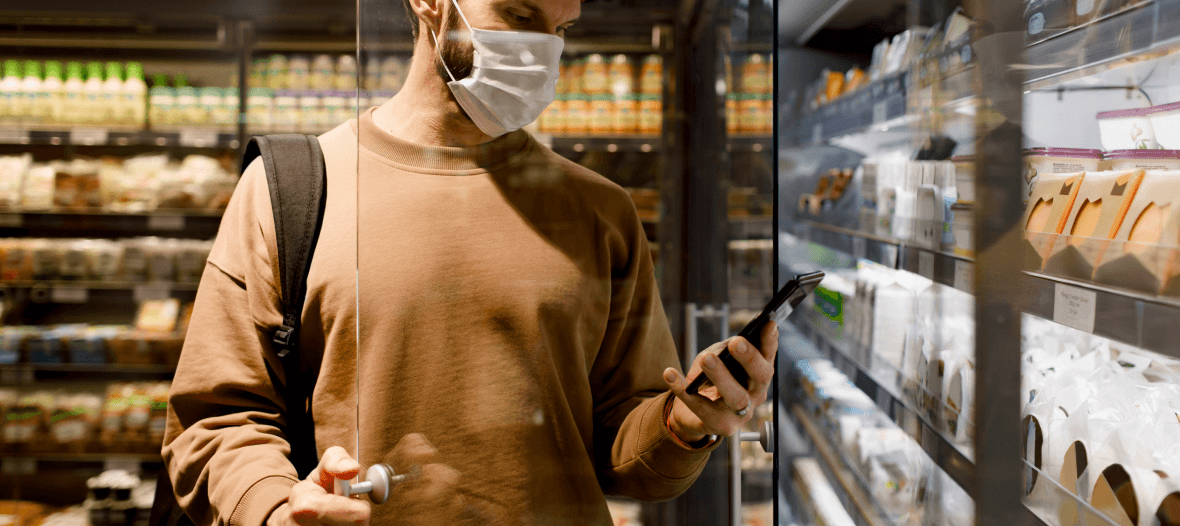
Evolving consumer behaviors. Consumers have changed dramatically during the pandemic — not just in their perspectives but also in their behaviors. This topic addresses changes in consumer values, expectations, lifestyles, shopping behaviors, and meal occasion planning focused on convenience and value. Key priorities identified include addressing consumer demands for transparency, retaining meal occasions that have shifted from traditional foodservice outlets, improving omnichannel shopping experiences, and providing for the growing health and well-being needs of consumers.
Rising ESG expectations. FMI members interviewed pointed to the importance of operating a “purpose-driven industry,” addressing “how the supermarket has become a focal point for societal issues,” and becoming more diverse as an industry. Key priorities identified include responsibly and sustainably stewarding environmental efforts — which ties into climate change; a circular economy, driven by reducing, recycling, and reusing; sustainable packaging; and agricultural practices. Other critical ESG issues are navigating values-based social responsibility, making progress with diversity, equity and belonging efforts, reducing food waste, and battling food insecurity and hunger.
Accelerating technology transformation. The industry has made technology gains during the pandemic, in areas including the enhancement of frictionless consumer experiences. However, itʼs important to further prioritize technology investment schedules while avoiding a focus on bright shiny new tech toys. FMI members expressed concern that the industry is “behind the technology curve” and needs to “accelerate investment in automation to enhance productivity.” Key priorities identified include accelerating the adoption of automation, making full use of artificial intelligence and machine learning, and preventing cybersecurity breaches.
Emphasizing industry collaboration
The pandemic has illuminated the necessity for closer trading partner relationships, especially on issues like supply chain. FMI is well positioned to help the industry make further progress with this need. As noted,the associationʼs members now include product suppliers, in addition to the longtime retailer/wholesaler member bases. The addition of product supplier members enhances opportunities for industry communications and collaboration.
Making strategies actionable
The key issues roadmap supports action-oriented steps for the industry and helps clarify the most relevant roles for FMI in supporting the journeys. For example, the association can help the industry communicate the attractiveness of careers in the food retail and consumer products sectors. FMI can help serve as a clearing house for technology and how it can best be applied. All of these activities line up with FMIʼs key propositions of advocating, collaborating, and educating.
Navigating through uncertainty
The ultimate goal of the key issues exercise is to help the industry and FMI navigate in a future marked by more ambiguity. Weʼve long craved the stable and predictable, but weʼve learned that in todayʼs world itʼs much harder to find. The industry has performed remarkably well during this most challenging of times. Leaders have learned to run their businesses successfully even without clear lines of sight. It will be important to help the industry further succeed with this capability, because no one expects a predictable operating landscape any time in the foreseeable future.
Supply Chain Disruption
Understanding And Overcoming The Supply Chain Challenge
8 min read

The myriad reasons for the current global supply chain problems are complex, ranging from factory closures in Asia to a tight labor market in the US.
The single most important lesson to take might be relatively simple: Maybe it’s time to think more about resilience — and whether the drive for efficiency hasn’t made our systems less robust.
Every day seems to bring news of another glitch in the supply chains that handle consumer products. Too many containers are on one side of the Pacific, and not enough on the other. New cars can’t be produced in sufficient numbers due to a microchip shortage, while other products — from sewing machines to sneakers — are out of stock. Packaging and raw materials, too, are in short supply: That even applies to wooden pallets, the price of which is up roughly 40% year-on-year. Moreover, these supply challenges — along with monetary policy, fiscal stimulus, and pent-up demand — are pushing up inflation, a topic many had hoped we’d left behind in the 1970s.
After decades of whittling down buffers, the consumer products and retail industry has become remarkably efficient at every stage of its supply chain. But, along with the resulting benefits, the industry is now more vulnerable to major shocks. Just-in-time inventory drives down working capital, for example. But it only works if suppliers can deliver in time, thanks to rapid, frequent transportation and glitch-free production by suppliers.
Just-in-time delivery becomes more complicated when manufacturers, seeking the cheapest sources for components, use suppliers on the other side of the world. That implies, long, multi-stage journeys, which worked previously — but do not when ports cannot function at full capacity, let alone when there are not enough containers in which to transport the goods. And those goods might not even be available if they are manufactured in an area of China with power rationing due to high coal prices and emissions targets, or if a factory in Vietnam has to close due to a COVID-19 outbreak.
That’s why it’s time to think about how better to balance the short-term economic benefits of efficiency with the longer-term benefits of resilience. How do we balance “just in time” and “just in case”?

The labor shortage and the bullwhip effect
Demand has picked up sharply recently: Personal consumption on durables, to give one example, is now more than 25% higher than before the pandemic. The challenge now is how to fulfill that demand, and one constraint is the tight labor market: There aren’t enough people working in distribution centers and chicken factories or — especially — driving trucks.
A major reason is the plunge in the US labor participation rate during the COVID-19 pandemic. Upwards of 3 million people left the labor force, and the participation rate fell 1.5 percentage points. It still hasn’t recovered, even as the unemployment rate has fallen: An estimated 1.5 million to 2 million of the people who left the labor force were early retirees, who are unlikely to return to work. Others are households’ second wage earners, who have reassessed their priorities as a result of the pandemic, for example changing the way they balance work with education and childcare. History shows that such individuals are slow to re-enter the labor force. Government policies, such as supplementary unemployment benefits, have done little to encourage a return to work, and vaccine mandates may also deter some people.
Economic shocks will always arrive from time to time, but many supply chains are less resilient than they could be. Models that leveraged historical data to anticipate future volatility were unprepared for something literally unprecedented. Companies calculate inventory needs and safety stocks based on factors such as target service levels, supply lead times, and the time it takes to replenish demand. As volatility and lead times have increased due to the pandemic, companies have increased target inventory levels, introducing more volatility, in turn, for their suppliers.
The result is a “bullwhip effect,” with small variations in demand downstream magnified as they work their way upstream — sometimes to levels that can strain the system. The crack of the bullwhip upstream echoes back down again in the form of shortages until the system adjusts.

How to boost supply chain resilience
We think there are a number of ways companies can boost their resilience:
Address labor challenges. Part of the solution is automation. But another part is making sure that teams are not stretched too thin, which can affect morale, harming retention and worsening the labor shortage. Proactive measures to boost morale include making hours and staffing models more flexible, introducing new retention incentives, and better recognizing individuals’ contributions. High inflation makes this a good time for employers to benchmark their wages to make sure they are competitive. Companies can also look at non-traditional candidates and hiring referrals.
Improve transparency, predictability, and communication with trading partners. To tame the bullwhip, ask trading partners, up and downstream: “How do you wish we would order (or deliver) differently?” and “What would we be doing differently if we were a single company?” The answers may be surprising. Inefficient ordering patterns might be easy to address. Substitutions can be aligned in advance. Shipping a partial order may cause a trading partner more trouble than it’s worth for them. Overall, a little bit of transparency may help a lot.
Work via industry associations to educate the public and government on the current challenges. At the start of COVID-19, consumers could understand why there were supply chain problems. But today’s issues are multi-faceted and have their causes further upstream, making it harder for consumers to understand and have patience with them. Industry and external stakeholders can start the right conversations to encourage policy solutions that address the challenges.
These initiatives should be overseen by a war room that identifies bottlenecks and addresses them with creative solutions. One of its roles will be to challenge the status quo — “the way we always do things.” Longer term, control and redundancy are key for sources of supply. Companies should adopt the motto “Two is one; one is none” when it comes to backups and redundancy and should consider what they can bring in house. And — despite the short-term costs of actions to account for the unexpected and hedge risk over the longer term — they should not forget these lessons once the current challenges are behind them.
Prepare for future shocks
In one way, the present challenges are a good problem to have: They are the result of consumer demand being strikingly healthy, considering the difficulties of the last two years. A time traveler from March 2020 informed that “two weeks to flatten the curve” of COVID-19 infections turned into two years could be forgiven for expecting a consumer economy in shambles. And yet, more than a year-and-a-half into the pandemic, grocery sales remain double-digit elevated. Imports of goods are higher than pre-pandemic levels. And consumer personal expenditure is not just higher than pre-pandemic levels; it is above the pre-pandemic trend.
But the supply chain difficulties might also be a sign that we, as a society, have erred too much on the side of efficiency at the cost of lost resilience and need to rebalance. Because, after we’ve put this shock to the system one behind us, there will eventually be another. While we don’t know what it will be or how far in the future, we want to be prepared as well as possible.
Supply Chain Disruption
Caught In A Prisoner’s Dilemma
By Rainer Münch, Marco Kesteloo, and Christophe Schmitt
6 min read

With elevated demand and supply-chain challenges, retailers and suppliers must choose whether to initiate a new type of collaboration or remain stalled in a standoff benefiting no one.
Both sides of the trading partner relationship are looking at negotiations differently. The starting point is challenging, with mutual term structures that could hardly be more complex, combining dozens of terms on the national, and (in Europe) international level linked to a broad set of counterparts ranging from in-store displays, to promotions, supply-chain conditions, or access to sales data. Many retailers report hundreds of individual term agreements across their supplier base, while suppliers oftentimes quarrel with retailers’ operationalization and the effectiveness of the counterparts. In summary, it’s a case of the prisoner’s dilemma, a paradoxical situation in game theory in which two individuals acting in their own self-interests fail to produce the optimal outcome — and as a result, both participants find themselves in a worse state than if they had cooperated with each other in the decision-making process.
Both retailers and suppliers are confronted with a challenging market environment characterized by saturation and slow growth, rising cost to serve, and an increasingly active role of regulators. The time has come for the two sides to simplify their term agreements and devote more time, and energy to focusing on customers and joint value creation — or ultimately having government regulations imposed on them.
Observers have long wondered how long such a highly inefficient collaboration could prevail in an industry that often praises itself for its efficiency and speed. The system in Europe in particular is under tremendous pressure, paving the way for a fundamental reset of the retailer-supplier negotiations, which may have lessons and implications for the US as well:
Convergence and internationalization of competition. Hard discounters are becoming more like supermarkets, Amazon has become a serious fast-moving consumer goods (FMCG) player, and new multinational e-food players are entering the market. In response, traditional retailers increasingly are becoming part of international buying alliances — in Europe, for example, we have seen almost 50% more such participation in 2020 compared to 2015. (See Exhibit 1.)
Exhibit 1: Number of grocery retailer1/buying alliance2 combinations in Europe
1. European grocery retailers with > 1bn € yearly sales (2020)
2. Alliances on both cross-European as well as national level, for private label and A-Brands
Source: Oliver Wyman analysis
Yet the incremental return of volume bundling alone is diminishing. All these elements are pushing toward a real redesign and simplification of (international) term structures and doing so from an increasingly powerful position in the market.
Tighter regulation. In Europe, French regulators — together with official watchdogs in several key markets in Eastern Europe — are limiting back margin elements while demanding more transparent counterpart measurement. Retailers are starting to use these dynamics to simplify their term structures not only from a domestic legal perspective, but also as a trigger for a more comprehensive redesign across markets.
Coming to senses. Despite all drawbacks, today’s complexity of terms is often interpreted as a unilateral advantage by both sides, but in reality, it involves unnecessary use of resources and reduced net-net-margin transparency for everyone. If “omnichannel customer-centricity” is to become a real paradigm, then it can only be supported by simpler term and agreement structures.
In our view, now is the right time for retailers and suppliers to drive changes before losing the customer out of sight and the appearance of additional regulatory impediments. This will allow for a simplification of the collaboration and more time and energy for (jointly) focusing on customers. Some European retailers have already begun this transformation and are starting to reap the benefits. Others who have yet to begin the process should not lose time and consider the following recommendations:
Create net-net transparency on Stock-Keeping Unit (SKU) level first. Knowledge is power, and leading the change is better than reacting to the proposals of others. Economic control over term simplification first requires deep transparency on the true net-net profitability on a product level. Retailers and suppliers should prepare now for the dynamics to come or risk losing control over the total P&L impact.
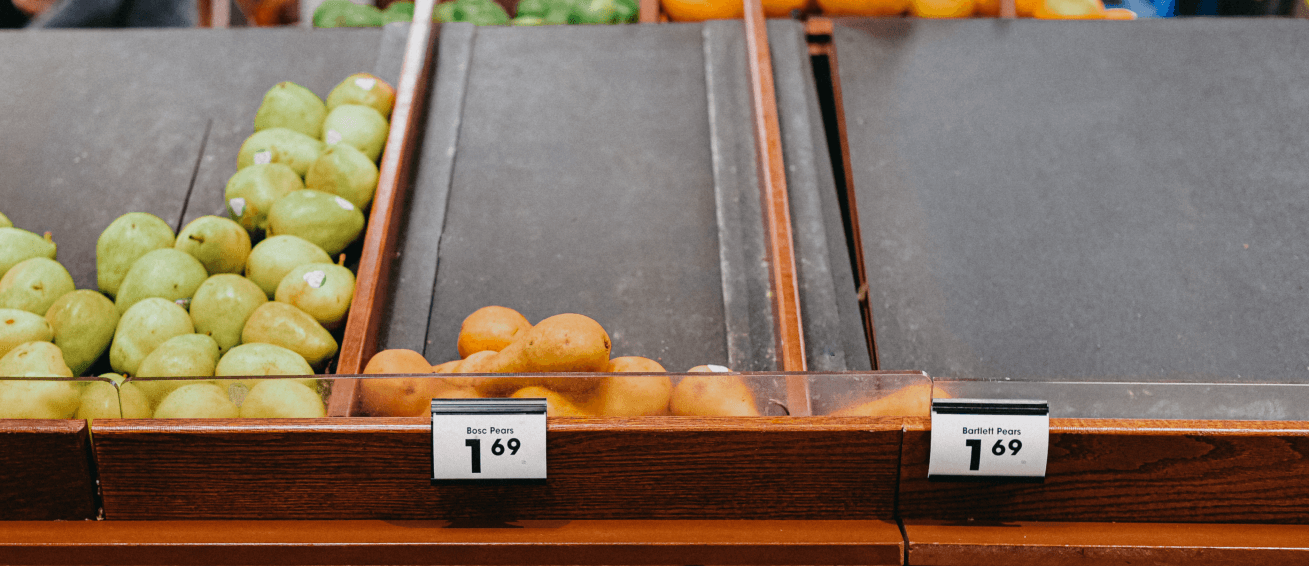
Dramatically simplify term and agreement structures. Reduce funding agreements with suppliers, trimming them to fewer than 20 from the hundreds that currently exist, and get as close as possible to net-net-margin basis on SKU level, so as to allow for a more effective steering of the business and a P&L forecast in real time.
Move from highly specific counterparts to strategic guardrails. Detailed definitions of counterparts may signal control for suppliers, but it often prevents a more holistic optimization of the value proposition to the end customers — let alone secondary effects like supply-chain efficiency or food waste further down the chain.
Start a new era of transparent, data-driven, customer-centric collaboration. Jointly focusing on the customers across channels should also mean working off the same data and KPIs. This will require more openness on both sides to share data, KPIs, and objectives.
Dramatic change will come to the industry within the next two to three years. It is up to retailers and suppliers if they want to get ahead of the curve and initiate a new type of collaboration now — or continue to devote their energy on complex negotiations until the sum of regulatory requirements demands action.
Supply Chain Disruption
How To Optimize Your Warehousing System
By Tushar Narsana, Jung J. Hong, and Korbinian Scharf
6 min read

Warehousing remains a critical portion of the supply chain with increasing complexity driven by the speed, scale, and volume of customer ordering. The growth of e-commerce has led to a proliferation of stock-keeping units (SKUs), and there’s an ever-broader need to engage and retain customers by offering immediate fulfillment. Technology is a factor as well, as new automation systems flood the market, and operations leaders face the challenge of keeping pace and understanding which technologies apply and what kind of impact they can create.
Worldwide, companies spend an estimated US$350 billion a year on warehousing. That number grows each year as pick sizes, or the size of orders picked from warehouse shelves, shrink and costs balloon, raising pressure not just on margins but also on service levels.
The warehousing categories that drive service level improvement include inventory accuracy, efficient space utilization, and proper process and physical workflows. Each category facilitates speed and accuracy and can be improved by implementing basic, but critical, practices and management capabilities, by leveraging a control tower concept. By implementing a technology-enabled warehouse decision-making process and system commonly called a control tower, operators attain real-time end-to-end visibility, predictive decision support, and collaborative information sharing.
From our work we’ve identified five best practices to enable the key capabilities and benefits of the warehouse control tower:
01
Disseminate clear instructions to warehouse personnel. Cross-functional key tasks are communicated, defined every day, and transmitted in real-time resulting in synchronization of schedules and work efforts under a warehouse control tower system. This resolves the common operational issue whereby information is siloed in warehousing operations. A silo typically happens where the warehousing operations have grown so fast that functions develop processes and collect data that is rarely democratized across the organization. Disseminating information clearly and comprehensively in real-time helps to avoid the problems associated with that common pitfall and this has a big impact on the efficiency of cross-functional activities.
Leverage technology and automation. Warehousing operations sometimes struggle with automating manual processes and maintain robust receiving to shipping back-office activities that are paper-based. By using technology and automation, however, companies can streamline their processes. Under a control tower structure, equipment is informing the warehouse, human error is removed, and data is tracking warehouse activity from receiving to shipping.
02
03
Implement a stocking, put away, and picking strategy based on demand characteristics. Inventory is categorized according to customer demand characteristics and warehouse space is organized to ensure the most “in-demand” SKUs are slotted to reduce travel times. A control tower system supports the runner, repeater, and stranger technique that promotes operational efficiency. Runner, repeater and stranger analytics help identify SKUs in three categories. Runners are SKUs that have the highest throughput and lowest demand variability. Repeaters are SKUs that have medium throughput and medium demand variability, while strangers are SKUs that have the lowest throughput and highest demand variability. From our experience, warehousing operations fail to conduct runner, repeater, and stranger analytics that consider the velocity, value of contribution to sales, and demand volatility to properly place the right SKU items in the right warehouse spaces.
Optimize the use of space. Using a warehouse control tower creates an environment where there are optimal material and traffic flows, outdated inventory is removed, and receipt-to-shipping cycle times are minimized. As a result of failing to implement the correct stocking, put away, and picking strategies, many warehousing operators miss out on an opportunity to decrease receiving-to-shipping cycle times by 5% to 10%. Implementing a strategy to optimize space can minimize these delays, reduce bottlenecks, and improve traffic flows.
04
05
Manage and track performance. Under a control tower system, processes are standardized, there is measured performance, and there are continuous improvement initiatives. Nearly all warehouses monitor key performance indicators (KPIs), but operators rarely understand how to translate KPIs into continuous improvement opportunities. By using a control tower system, KPIs can be considered as part of the bigger picture, rather than in isolation, and they can be amended where necessary.
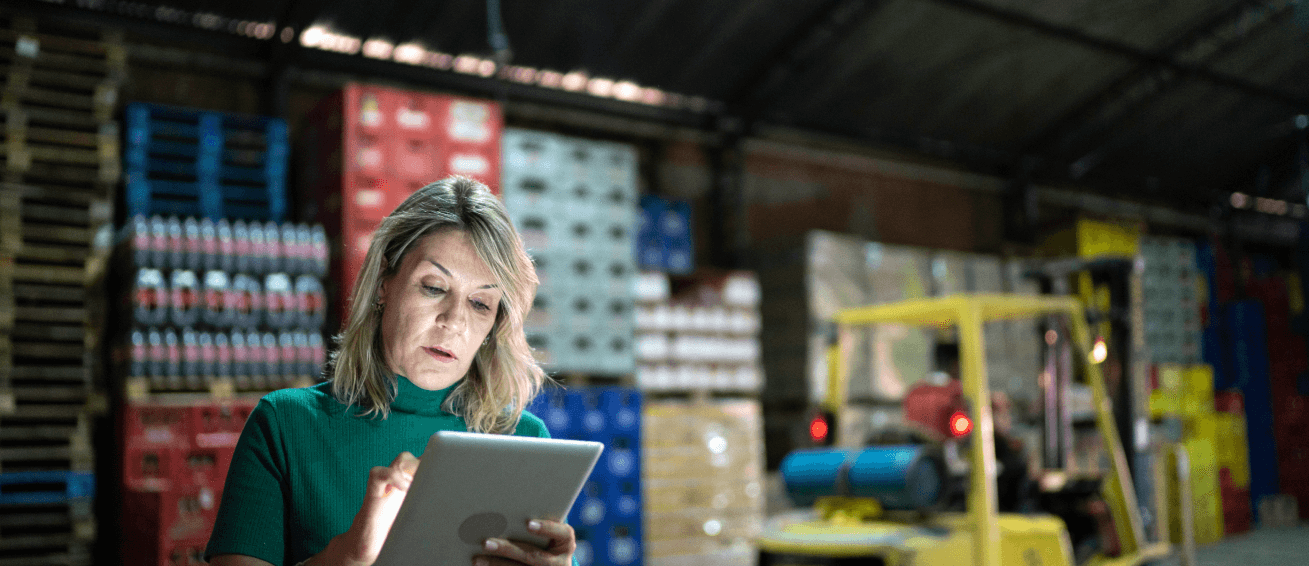
Erratic and unpredictable, the economic climate rarely stays stable. Maximizing profits for businesses takes a well-planned strategy to increase warehouse productivity while cutting down operations costs. Competition is rampant, and it can be easy for a warehouse to fall into the trap of spending money on things they do not need. Reducing warehouse costs is at the top of the list for distribution professionals. At the same time, it is crucial the levels of quality and customer service continue to rise. Put simply, operating a warehouse is far from the easy task it looks to be.
As businesses compete to provide the fastest delivery times, warehousing operators will be expected to keep up. Maintaining inventory accuracy and seamless inbound and outbound operations by leveraging data democratized through control towers and managing cost will prevent warehousing from becoming the bottleneck in the supply chain.
Labor Shortages And Workforce Challenges
Turnover Is Up. Why Money Alone Won’t Solve The Problem
By Lewis Garrad, Garry Spinks, and Nick Starritt
6 min read

Workers face multiple reverberations from the fallout of the pandemic, resulting in a range of new or aggravated sources of stress that weigh heavily on their futures.
Employers are experiencing pent-up turnover. During the earlier stages of the pandemic, companies saw lower-than-normal attrition rates as people stuck to their employers — partly because they were satisfied with companies’ handling of the crisis and partly because jumping ship wasn’t a safe bet in the teeth of a global pandemic.
Nearly two years on, two in five organizations globally say voluntary attrition rates are higher than usual among mid-career professionals and entry-level professionals (in the US, almost half of companies say attrition is higher for both cohorts). The challenge is particularly pronounced in industries such as professional services that rely heavily on knowledge workers. Their take on the problem? By a large margin, employers believe pay is the biggest driver of turnover.
Hence companies are throwing money at the problem by increasing promotions, paying higher than market rate wages and boosting salary/merit increase budgets, according to our survey. Clearly, these are expensive solutions — and ones that are hard to sustain. More critically, financial quick fixes may have a limited impact. Workers face multiple reverberations from the fallout of the pandemic, resulting in a range of new or aggravated sources of stress that weigh heavily on their futures.
Understand unmet needs
In the pre-pandemic days, organizations’ packages were rife with perks such as gym membership or in-house baristas. But the pandemic brought to the fore glaring unmet needs: the things in employees’ lives that cause stress and keep them up at night. These things — such as debt, reduced job prospects, precarious health care access, or limited child or elder care — hold people back from performing their best.
The more companies understand people’s stress and critical unmet needs, the better they can judge the programs, rewards or experiences that would differentiate their employee value proposition, or better communicate what current programs exist to help alleviate those stressors. Technology, from sentiment analysis to digital focus groups and pulse surveys, means organizations can study and connect workers’ experiences faster and in new ways — bringing the rigor of customer research into the employee experience.
Solve for stress
Initial analysis of a recent poll by Mercer reveals a tale of two workforces emerging — with unmet needs diverging more and more between lower-wage workers, who are most worried about making ends meet, and higher-wage workers, who are concerned about personal fulfillment and purpose.
Ensuring employees’ bright futures means supporting them to develop and progress, as well as realize their personal purpose.
This will require different solutions on the part of employers. For lower-wage workers, leading businesses will take a closer look at the role of job design as part of the employee value proposition and total employee experience in order to create a more attractive, quality job. Leading firms will also challenge themselves on what workers really value. While the good news is that companies from Costco to Bank of America are raising the minimum wage, more creative thinking is needed. For example, only 12% of companies surveyed are looking at transportation assistance, and just 4% are considering how workers get paid (e.g., early payment, paycheck access via an app). Data here will be crucial, including salary data that takes into account the creeping inflation affecting people’s purchasing power.
For higher-income and knowledge workers, personal development and empowerment to learn are at the epicenter of the new work deal. Even before the pandemic, 78% of employees said they were ready to learn new skills. Ensuring people sustainability through future employability and skills is now a critical part of the employment contract — and one that employers need to address urgently.
Many firms look to other organizations for answers about how to focus reskilling efforts, hoping this will be relevant to their own employees. This may blind them to their people’s actual needs or target the wrong skills. Ensuring employees’ bright futures means supporting them to develop and progress, as well as realize their personal purpose.
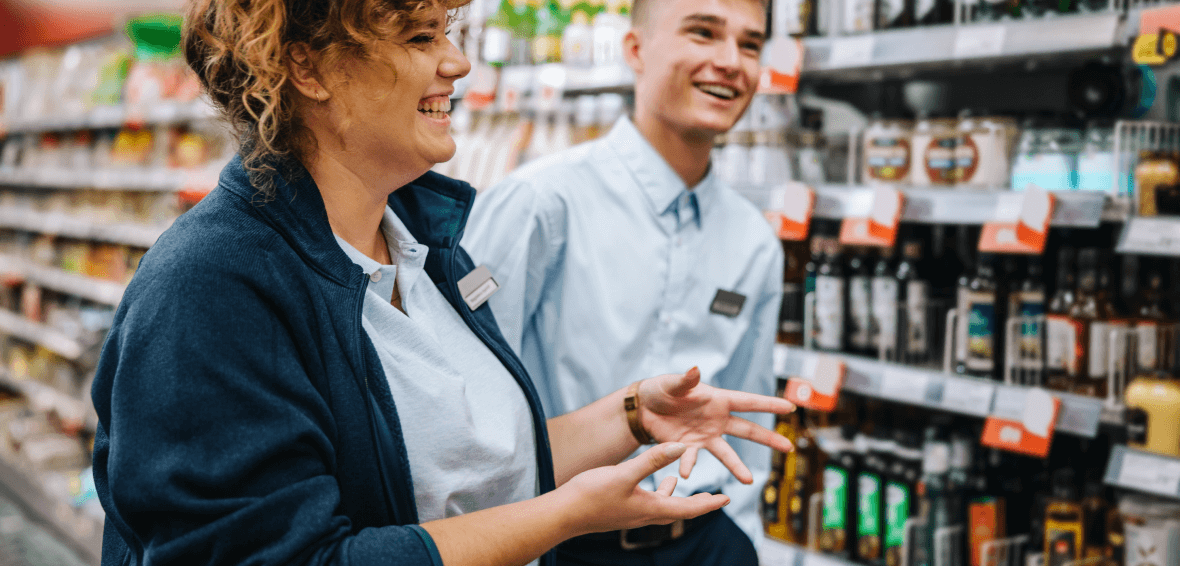
Some needs are universal
Regardless of income, we know that all people want empathetic, enriching, embracing and efficient experiences. With many organizations focused on financial fixes, being ahead of the pack on the four Es is there for the taking. For example, hybrid working is in vogue, but are companies considering how and what work gets done, as much as where it is done? Digital technology goes a long way to removing boundaries in our lives; boundary-less work creates opportunities to meet needs in new ways, such as doing exciting and engaging work from anywhere. Yet, it will also require careful crafting to ensure it doesn’t create new problems, such as the inability to switch off.
Companies will also need to address the often-neglected need for belonging, which is experienced through culture and shared experiences. For example, some organizations are pivoting to higher-quality office space to create a stronger sense of belonging. The challenge will be to ensure that everyone has access to such experiences, not just the privileged who are allowed to be in the room (roomies) while zoomies are left dialing in from the sidelines.
The organizations that challenge themselves about what their people truly need and use technology to seek out the sources of stress to solve will turn the turnover problem around.
Labor Shortages And Workforce Challenges
Future Of Work
By Antonios Christidis, and Jessica Marlborough
8 min read

The COVID-19 pandemic is forcing financial services executives to reimagine the workplace of tomorrow whilst simultaneously scrambling to ensure they can operate safely today. The moves they make in the next few months in shaping how colleagues return to the office could have ramifications for years to come.
Since the beginning of the pandemic, firms have learned that some, but not all, of their business functions can be carried out remotely, whether they be customer interactions, back-office operational tasks, or talent management. Firms have also learned that many of their employees have come to appreciate remote work because it allows them to avoid commuting, better serve as caregivers, or carve out extra time in the day for themselves.
But which tasks, and which people, should be remote, and which should be together?
One of the central challenges of the next 10 years in financial services will be to strike the right balance between organizational imperatives and employee wellbeing. The simple answer may be hybrid working arrangements. But finding the right mix isn’t easy.
It is important to begin with establishing what the overarching objective(s) should be. Does the firm seek increased productivity via higher employee engagement and retention? Increased operational efficiency via more predictable work patterns? Reduced costs via optimization of real estate and office expenses? Improved customer service via increased coverage? Or some combination of all of the above? This should act as the North Star to guide the design of the future of work.
Having established clear objectives for its hybrid model, the firm should then move to define how this will be operationalized.
Will it be primarily employer-driven, meaning the employer defines how many days one will work from home, or employee-driven, allowing employees to make their own choices? And how will the preferences of the two groups of stakeholders interplay? For example, if the employer defines the number of days to work from home, how does it cater for employee preferences such as whether to work from home on Monday or Friday?
Three parameters will determine whether the hybrid work model should be primarily employer- or employee-driven. The first is the nature of the work itself. Does the work require in-person interaction or are there regulatory requirements for on-premise presence? The answers may vary between job families, with some parts of the organization being more hybrid-ready than others.
Second, the corporate culture: Has the firm historically been an organization that values face time? If so, moving to a hybrid work model will be particularly challenging, with a risk of slippage back to old habits — in which case an employer-driven model would work better and allow a reset of the culture.
Third, is the firm in a highly competitive market for talent? If so, offering more flexibility is important. If all the firm’s competitors are offering remote work options, then in the long run the firm might face challenges attracting top candidates. For these types of situations, an employee-driven model works better.
What is clear is that a one-size-fits-all approach probably won’t work. Although good practice varies between the boundaries of the two models based on the specific circumstances of each organization, we do have some sense of what bad practice looks like. For example, letting each manager independently decide how to approach this for his or her own team doesn’t work well. It creates an inconsistent operating environment with different treatment of employees in different teams, fails to factor in the broader impact that individual manager choices have on the team and the firm, and leaves little to no room to cater to employee preferences.

So how can an employer-driven model work in practice? Simply put, the company defines who can work where and when. We see many companies now requiring employees to spend at least three days in the office. The question, of course, is which three days and who decides. Firms choosing this path generally designate the degree of remote working by using structured customization. They typically start by segmenting job families (such as by the ability to execute remotely vs. level of human interaction required), then review key interfaces between internal teams and clients. Finally, they formalize their approach, requiring, for example, all jobs in an area of operations to be in person at least three days a week with specific guidelines about how to ensure smooth operational continuity so that everyone isn’t remote on Fridays or flocking to work on Wednesdays.
Firms should complement this kind of role analysis with an assessment of employee sentiment and analysis of various “personas,” or fictional characters that represent the different types of people who perform various functions. While someone might belong to the same job family, a new joiner living in a flat shared with three friends in London will have very different needs from an experienced professional with small children and significant caregiving responsibilities at home.
In the employee-driven model, the employees define where (and possibly when) they want to work. This can then be broken down further into manager approved (retaining some level of employer control) or manager informed, where at the extreme an employee can wake up each morning and decide not to go to the office that day, or chose to work fully remotely 100% of the time.
Subcultures within the same organization, such as in different business areas or geographies, might make a manager-informed, employee-driven approach entirely inappropriate in one place but perfectly feasible in another. Likewise, a strict employer driven model might not be desirable if a key goal is employee retention. The model doesn’t always have to be applied universally.
If a firm has a high level of persona variation, the employer-driven model may be more challenging to implement.
Through our work with clients across the financial services industry, we have identified the most important steps to take and considerations to make in determining the best model for a particular firm:
Ensure that the new work model considers and caters to your client needs — be they internal or external — for service, support, and interaction. For example, a support function coming into the office to sit on Zoom all day providing services to a remotely located front-office would be frustrating, and vice versa.
Consider how to maintain a culture of collaboration (within and across teams) and apprentice learning. This is difficult to do fully remotely and is particularly important for growing the next generation of talent.

Always take different life stages and personas into account. Focusing only on the job to be done is a mistake and is likely to mean your model is not fit for purpose and might not work in practice.
Think carefully about how you will practically implement a model of hybrid working practices in a fair and effective way across teams. Consider how you will ensure equal opportunity for employees working under different arrangements.
Ensure you institutionalize the appropriate guidelines to run effective hybrid meetings. Use this opportunity to greatly enhance diversity and inclusion. This is a once-in-a-generation chance to level the playing field for all employees who in the past had to leave careers or slow down at work due to life circumstances that left them unable to work in the office, such as new parents.
Last but not least, build flexibility into any new working model to enable you to test, learn, pilot in different areas, and course-correct over time. Couple this with staying open and honest with employees, letting them be part of the solution, and giving them as much certainty and advance notice as possible.
In the end, each firm needs to take its own circumstances and culture into account as it develops a hybrid working model. Those that do this thoughtfully, using the advice offered here, will create a new model that will serve them well for years to come.
This article was first published in The Investment Association’s Future of Work publication.
Changing Marketplace And Societal Dynamics
High-Productivity Grocery Store Operations
By Ingo Nageleisen, Tanja Ebner, Rainer Münch, and Jens Torchalla
5 min read

The COVID-19 pandemic has provided some lessons for brick-and-mortar grocers. One of the most striking learnings is that there is plenty of scope to boost the productivity of store operations.
However, those productivity rises that were achieved during the crisis have been mostly thanks to short-term increases in demand due to the pandemic. Some retailers have seen sustainable sale uplifts of 10% in stores without considerably more efforts. Apart from these encouraging short-term effects, grocers are facing creeping increases in the cost of their store operations year by year — a trend that started before the pandemic and will continue in the future. The trouble is that decision-makers often lack clear links between their operational costs and the strategic decisions they make over product mix, the promo business, store operations, and other aspects of their operations.
Five success factors for increased productivity
To understand these links better, we carried out a large field study of seven European retailers and analyzed them through 100 key performance indicators (KPIs) in their store operations. We found five success factors of efficient retail operations, which can lead to increases in productivity of between 15% and 30% and make operations more resilient.
Most productive grocers do the following:
01
Lean ordering, delivery, and restocking processes. They have largely automated the ordering process for all goods through sales-based ordering (SBO). Promo planning and ordering has been centralized, leaving limited local decision-making authority. Restocking is based on the principle that “every delivery fits the shelf”: Distribution centers provide sorted deliveries that reflect the layouts of individual stores and fit into the shelves without breaking them apart. Furthermore, Shelf-ready packaging and smart shelves are used for neat product presentation. This means goods only need to be handled once and don’t fill a store’s back rooms.
Seamless promo business. They have optimized their supply chains for just-in-time, ready-to-use promotion deliveries. Accurate central planning and KPI-driven category management ensure that few residuals are left over after promo weeks. Those that remain are dealt with through an effective process.
02
03
Balanced in-store production and services. They know which local production steps and services add value to their business, so they make deliberate compromises by ramping up and down services and staffing over the course of the day and the week. Local processes are restricted to customer-facing activities, such as running the bakery and the meat counter. Digital production-planning tools reduce the time spent on items produced in-store, while ensuring that quality standards are maintained.
Self-checkouts and scheduling. They have implemented self-checkouts and optimized product packaging to boost scanning rates. Demand during the day can be forecast based on models, so the cash desks are only opened at busy times and closed when traffic is quiet. In addition, flexible processes allow desks to be opened and closed in case of sudden rises or falls in customer numbers.
04
05
Flexible work and digital support. They use task-based labor-scheduling tools to calculate the expected staffing requirements in each store and plan shifts accordingly. The administration of shifts and tasks for each member of staff is made easier by intuitive, digitized tools for communication and productivity.
Source: illustrative
The challenges for productivity improvement in stores
To figure out which of these levers to focus on, grocers need to see the connections between their strategies and their costs. However, most don’t have enough information on the underlying drivers of workforce productivity and inefficiency. Some, in contrast, have gathered meticulous process descriptions and time evaluations from their workforces in an effort to understand — and thus mitigate — the challenges. But these reports are often too detailed and thus fail to pinpoint the main causes of inefficiencies. So, in both cases, decision-makers lack clear links between the costs of retail operations and their strategic business decisions. That means they miss the key levers to significantly reduce costs and improve margins.
Retailers that want to make their costs more transparent can start with a three-step approach:
- Generate an understanding of the hours taken by the various operations in their stores
- Compare their operations with those outlined in the five success factors of productive grocers
- Identify gaps in operations, which will typically include central functions and sales, and address them
The disturbances caused by the COVID-19 pandemic offer a great chance for all grocers to challenge their store operations structures. We encourage them all to leverage this crisis and pave the way now for a step-change in productivity.
Changing Marketplace And Societal Dynamics
The Race To The Future Of Convenience Retail
By Bob Orr, Hunter Williams, and Gyongyver Menesi-Bondar
8 min read

Technology is the key to providing a wider range of services
Major transformations are sweeping over the grocery and convenience retail sector, making it imperative for stores to rethink their fundamental operations. Consumers are becoming more conscious of health and sustainability. And technology is making retail operations more efficient and helping stores serve a growing variety of needs.
Fuel purchase and convenience shopping missions have been paired almost since the mass adoption of the automobile. As a result, perhaps one of the biggest impacts on mobility and shopping missions will come from the shift to battery electric vehicles (BEV), which are changing the way drivers put energy into their cars. Providing charging facilities is an attainable option for most convenience and grocery retailers and improves customers perceptions. To add 100 miles (160 kilometers) of range, it takes 4.9 minutes to recharge an average electric car. The period a driver needs to charge their car often increases to 20 minutes or more, making convenience and grocery store locations to become a suitable alternative to other out of home charging facilities. At the same time giving customers an opportunity to refresh themselves and do some shopping — and retailers an opportunity to cater to them.
Supermarkets and other non-fuel retailers are already starting to provide recharging facilities, as it is relatively easy to get hold of the necessary hardware and there is no legacy mindset to be overcome. With this added service they can broaden the set of shopping missions of their customer base.
These shifts create challenges and opportunities for retail stores linked to mobility, and they will either adapt with speed or be left behind. Here are three actions that can make a difference.
An additional 30% of consumers have begun using contactless payment and checkout, and 70% of those newcomers will continue in future.
Provide healthy products, attractive facilities
COVID-19 has increased people’s concerns over hygiene and cleanliness. While all retailers have implemented immediate actions to social distancing, reduced contact, sanitization and stricter packaging rules, the journey continues to establish new standards and operational protocols that will remain for the long run. Health and sustainability are rising concerns, especially for the young and for the BEV drivers who might have extra time to wait while recharging. Among Generation Z consumers, who were born between 1997 and 2012, 54% are willing to spend an extra 10% for sustainable products, compared to 34% of Generation X consumers (born between 1965 and 1980) and 23% of baby boomers (born between 1946 and 1964), according to a 2019 Forbes report.
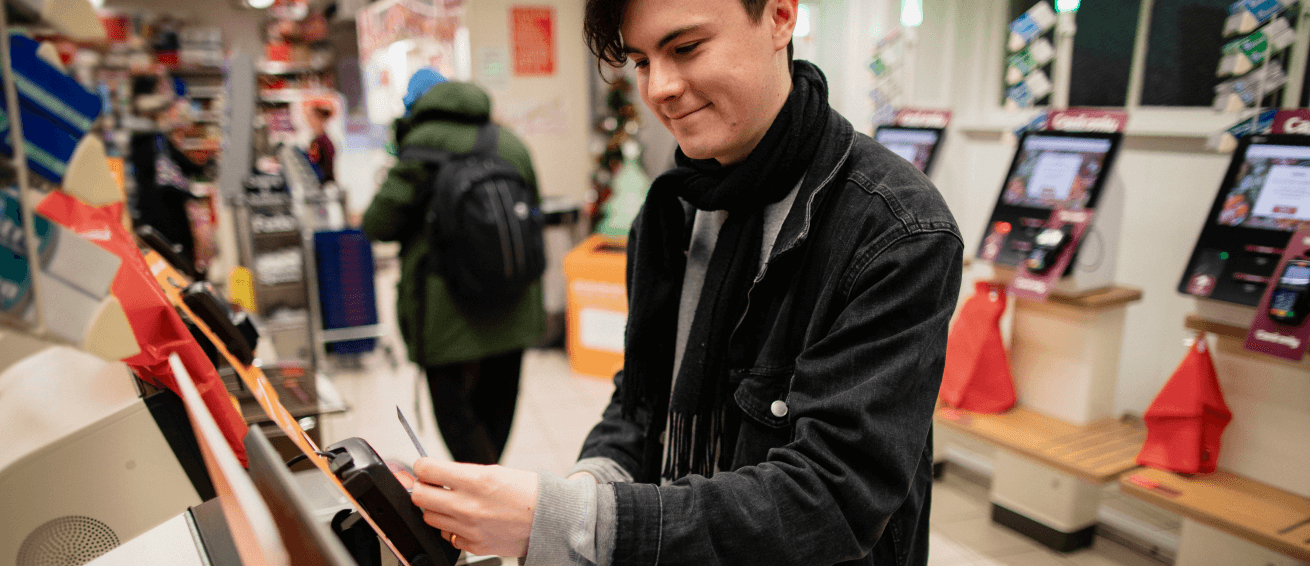
In the US, 68% of people say they would visit their favorite convenience store more often if it offered healthy sandwiches and salads, according to research by Vixxo. Foodservices for instant consumption require skilled workforce, including trained chefs and baristas, complex operations such as cold chains, and increased hygiene standards. While grocery stores have those capabilities ready, convenience players have to invest to building them. Irish convenience stores have shown it can be done, by investing heavily to provide healthier options, and they typically offer around 3,000 different products and restaurant style food. Convenience stores now account for 24% of Irish grocery retail sales, a much larger share than the global industry average of between 12% and 15%. They also increased the gross profit margin by 58% between 2016 and 2019.
This example illustrates that channel blurring through food services continue, hence convenience retailers and grocery stores need further differentiation to protect their customer base destinations for distinct shopping missions. Customer-centric technology, and high standards of food hygiene complementing the offer are welcome by customers of both channels, while user-friendly lounge facilities may be more applicable to convenience players.
Make shopping frictionless
Technology has played a key role in retailers’ interactions with consumers, which have become real-time, interactive, and intuitive. The trend towards greater concern with hygiene has also boosted demand for contactless shopping, including payments. Since the start of the pandemic, an additional 30% of consumers have begun using contactless payment and checkout, and 70% of those newcomers will continue to use them in the future.
Beyond payment, some retailers are trying to reduce — even remove — physical interaction with sales personnel entirely. Pioneering unmanned stores use a combination of sensors, cameras, and visualization technology to eliminate the need for cashiers. Every large convenience-store chain in Japan is aiming to implement self-checkout stations at all their stores by 2025.
Totally unmanned stores require costly technology, putting such systems out of reach of most retailers. However, a New-Zealand based low-cost system, which delivers some of the same features and does not require stores to be retrofitted, is being launched in the Asia- Pacific region. A smart basket detects and automatically registers items that a shopper adds or removes using computer vision and artificial intelligence. In parallel, the shopper uses an app, which generates a list of purchases and converts this into a barcode. Finally, a (human) clerk scans the barcode on their phone to complete the transaction. Retailers will be able to install the system within a week, and data from the app will provide insight into customers’ preferences.

Widen the choice of product and delivery
Consumers want personalization, efficiency, and control, and they have growing expectations. All retail formats have sped up their services, so convenience retailers, supermarkets, and online delivery companies compete with each other in many aspects that was illustrated earlier. That implies offering a wider range of products, services, and delivery channels: made-to-order food as well as grab-and-go; self- and assisted- checkout; and mobile, cash, and card payment options.
Japanese convenience stores have succeeded by leveraging their proximity and becoming reliable one-stop shops for their communities. As well as food and beverages, they sell concert tickets and transportation passes, provide high-speed Internet connection, and act as points to send and receive parcels. Partly thanks to these ancillary services, they are among the busiest in the world, with an average of 932 visitors per store every day.
In fulfillment, COVID-19 catalyzed multichannel interactions to let consumers shop safely. New models include mobile order, order at the pump at gas stations, curbside pickup, drive-thru, and home delivery. Globally, 57% of convenience retailers currently offer last-mile fulfillment services, according to a recent study by a global association of convenience stores. However, more than 80% of these retailers in Australia and Europe offer these services, compared to only 46% in North America.
Conclusion
Mobility trends, technology evolution, and consumer adaptation are about to transform the way consumers shop for their everyday needs in coming years. These could be a threat to stores that don’t adapt, but a great opportunity for retailers willing to try out new formats, services, offers and technologies and learn from the leading practices worldwide. Stores can understand clients’ changing demands by relentlessly collecting and analyzing purchase data in real time. They can then maintain both an online and in-store presence, ensure a cohesive experience across the two, and personalize offerings in anticipation of customer needs. If they don’t, then others will take advantage of the opportunities instead.
Evolving Customers Behaviors
How Gen Z Shops And Pays
By Elizabeth Costa, and Neeko Gardner
12 min read

One of the enduring legacies of the COVID-19 pandemic has been the role that younger consumers have played in reshaping retail. Younger generations in the United States shop very differently from their elders, and understanding their preferences is essential for merchants designing and implementing payments strategies for the long term.
Younger generations’ buying power, already strong, will only grow as they age into their highest-earning years. Millennials are already on the cusp, and Generation Z is following on their heels. Merchants need laser-like focus on these two increasingly powerful groups of consumers.
Shopping trends
Younger generations are much more comfortable than older ones with shopping online, particularly for non-necessities beyond the typical categories of food, medicine, and household goods. When asked if non-essential purchases were planned over the next week, 40% of Gen Zers and 50% of millennials said “yes,” vs. 26% of older groups, according to Oliver Wyman’s retail payments analysis survey from June. With alternative payment methods like buy now, pay later (BNPL) and other forms of digital payment gaining popularity, these generations are leading the charge for change. Younger consumers are the core shoppers of the future and will reshape the way customers interact with merchants.
We see a similar trend playing out in digital banking: Gen Zers and millennials are more likely to use digital banks, although the majority still use traditional ones for primary bank accounts. Our June retail payments analysis survey showed that 21% of people age 18 to 24 use digital banks, compared with only 3% of those in the 55-64 age group. These new digital banks often have creative payment solutions that are attractive to younger customers.
Exhibit 1: Preferred shopping methods, by age group (for non-necessity items)
In %
1. Non-necessity items refer to those other than food, medicines, or gas
2. Respondents were asked to select all preferred shopping methods that applied, so totals may not sum to 100%
Source: Oliver Wyman analysis survey, June 2021 N = 1,138
Younger generations not only have a greater tendency than their elders to prefer shopping online for things other than necessities — they also are more likely to shop online on a marketplace, with roughly 5% shopping via the websites of social media influencers. We expect these markets will continue to gain popularity with younger consumers, mainly because millennials were the first generation to grow up with social media.
Payment trends
Younger generations diverge from older ones in the payment methods they prefer. They have a greater propensity to use cash and debit than older segments and a much lower tendency to use credit cards. Yet this population is willing to use alternative payments, opening themselves to new ways of engaging with merchants that offer payments options integrated into their daily lives. We expect this trend to continue as alternative payment offerings such as BNPL solutions, cryptocurrency, and super apps become the preferred way for consumers to shop and pay.
Exhibit 2: Reason for using a BNPL solution
By age group
Source: Oliver Wyman analysis survey, June 2021 N = 1,138
The majority of BNPL users, for example, are under the age of 35. These shoppers are generally wary of traditional credit cards; Gen Z usage of store credit cards is only 27%, compared with 48% for baby boomers. BNPL represents an alternative, allowing shoppers to enhance their purchasing power by splitting up the payments over several months, without interest.
EVOLVING CUSTOMERS BEHAVIORS
Health & well-being: the food as medicine opportunity
Read more
This younger generation also has expressed a need for an alternative form of payment that does not make them feel more indebted but rather makes them feel confident they can afford the purchase. For this reason, 24% of Gen Z shoppers reported using BNPL to avoid revolving debt, vs. just 9% of Gen X shoppers. The prevailing view among younger shoppers is that BNPL financing isn’t credit. They feel they are exercising good money management by choosing alternative payment solutions.
These younger consumers are digital-first buyers who demand an immediate transaction and the freedom to make a choice without conditions attached to it. And so BNPL companies are answering these digital-first customer needs with two product approaches: a monthly installment loan model and a short-term installment payment model. The longer-term monthly installments are for larger purchases, involve a credit check, and have interest on the purchases. They are typically paid over the course of many months. The latter approach are short-term installments for smaller purchases and are “Pay-in-X” solutions where the consumers pays a set amount three to four times over the course of the six weeks. For example, if someone buys a $100 item, they may use this option, and it will be four payments of $25 at no interest. The short-term installment approach typically does not have a hard credit check.
BNPL is no longer a payment option that is configured and offered primarily by merchants — major providers are going straight to consumers with their solutions. One BNPL player is even enabling consumers making larger purchases to pay in monthly installments via a credit card already in their wallet rather than sign up for a new service at the point of sale.
Another clear adoption trend we are seeing is young, first-time users embracing BNPL for smaller purchases: 70% of Gen Z shoppers’ BNPL purchases are for less than $100. Younger generations don’t perceive BNPL as a solution only for large-ticket purchases.
The August announcement of a planned acquisition of a main BNPL player for $29 billion, a 30% premium above its last closing price, underscores the prevalence of the belief that BNPL is an essential form of payment for the next generation of buyers.
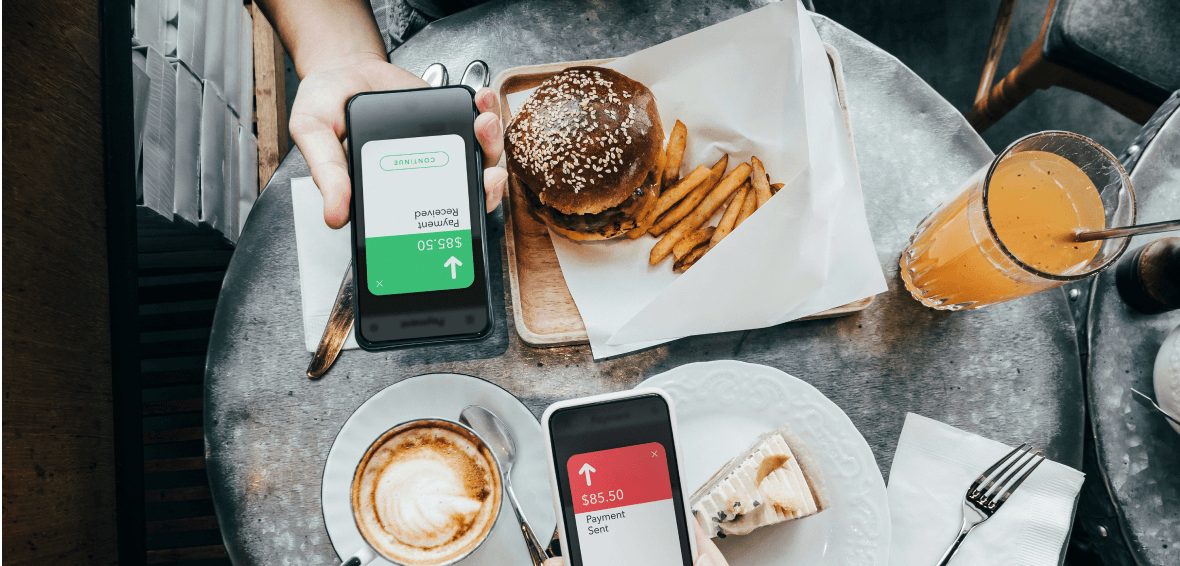
What’s next for merchants and BNPL
We see three reasons for merchants to consider BNPL payments. First, BNPL can increase incremental sales, especially in impulse-purchase product categories. Next, they offer increased customer touchpoints and upselling opportunities.
Finally, BNPL payments offer merchants improved targeting opportunities for Gen Z and millennial audiences.
We see several developments on the horizon for BNPL. First, we expect increased competition for users as BNPL providers battle to capture market growth, fueled by low user loyalty to any given provider and the entry of traditional banks in BNPL. We also expect growth in in-store use cases as providers become increasingly omnichannel and BNPL providers market directly to consumers. We anticipate BNPL increasingly will be presented as a preferred payment method for online purchases. And we expect added scrutiny from regulators seeking to protect consumers, especially for longer loans with interest claw-back on missed payments; a recent study by The Ascent showed that 31% of users made a late BNPL payment and incurred fees as a result.
The trend toward alternative payments
Gen Zers and millennials increasingly are willing to pay with alternative forms of payment beyond BNPL. Cryptocurrency and the increasing usage of person-to-person (P2P) payments and mobile wallets are far more popular with younger people than with older generations.
Cryptocurrency has been experiencing explosive, albeit volatile, growth in recent years, and has gained considerable traction with established institutions. According to the May 2021 Cryptocurrency Payments Report, 48% of Gen Zers and millennials have owned or currently own cryptocurrency. Consequently, a growing contingent of networks, big tech, and e-commerce merchants is encouraging cryptocurrency as a form of payment.
Cryptocurrency payments bring opportunity but also uncertainty. Accepting cryptocurrency at checkout could allow merchants to capitalize on emerging trends, offering quick transactions, lower fees, strengthened security, and a broad market, without needing to convert currency or prices based on the sale’s location. But there are some unknowns. Merchants might suffer less direct fraud, but buyers could face more. There is also the question of whether crypto can facilitate cross-border trade over the long term. It might be too early to tell whether accepting crypto drives new sales and customers for business or merely represents an alternative form of payment. It is also difficult for merchants to manage returns and refunds of crypto purchases because blockchain transactions are irreversible. And volatility remains of one of the biggest issues faced by buyers and sellers.
Person-to-person payments and mobile wallets are also rapidly gaining traction. Currently, there are five major P2P players in the US, and $1.152 trillion is expected to transact annually via mobile P2P apps by the end of 2023, according to eMarketer. By the end of 2025, 62% of Gen Z smartphone users in the US are expected to transact via P2P payment apps.
Merchants have become increasingly amenable to P2P as a form of payment. In the US, merchant apps have strong adoption thanks to the better shopping experience and personalized communications they allow. But that may be changing as delivery aggregators expand their capabilities, new functionality emerges from third-party apps, social platforms move into payments with social shopping, and select companies develop super-apps to reposition themselves in the center of the customer’s life.
Super-apps, popular in emerging markets, are becoming more prevalent around the globe and are positioned for growth with millennials. In the US, merchant apps typically have greater usage than third-party super-apps in merchants’ point-of-sale transactions. So, whether a one-stop app for lifestyle needs catches on in the US (vs., say, China) remains to be seen.
Delivery aggregators that shot to popularity during the pandemic are expanding their capabilities significantly in the eyes of consumers. This bears watching as players reposition themselves to be in the center of customers’ lives. Payments are the critical component in their effort to reposition and enable activities from end-to-end in the shopping experience.
Social commerce adoption in the US is limited today, but could gain more traction as “social literate” millennials and Gen Zers acquire more wealth. We are seeing more social media platforms moving into payments in an effort to keep visitors on their sites.
What this means for merchants
Merchants should offer the most relevant forms of payment to attract the next generation of buyers. An April study by PPRO showed that 44% of customers overall — 51% of millennials and 48% of Gen Zers — will abandon a purchase if their favorite payment method isn’t available.
While P2P payments for larger merchants is still nascent, there is potential for these payment methods to become more prevalent.
The adoption of cryptocurrency as a payment method is minimal today, but this is an area that should be monitored for potential growth and more widespread use going forward.
Merchants should be sure they have a Gen Z and millennials payments strategy in each of their markets globally and each channel to know which forms of payment to accept everywhere they operate. They also need to know what partnerships to set up to ensure they have control over customer relationships. And they must understand shoppers’ preferences — and the tactics necessary to drive those preferences — for each of their segments.
Evolving Customers Behaviors
Retail's Revolution — How To Navigate It
By Sirko Siemssen, Pedro Yip, Frédéric Thomas-Dupuis, and Rainer Münch
10 min read

If the retail and consumer goods industries had been preparing for a more settled period after the disruption and hyper-competition of the past decade, in 2020 they got the opposite. The COVID-19 pandemic led to numerous big changes.
Online shopping surged. Technology-assisted methods of intermediation, such as online shopping advisers, became more widespread. And product brands accelerated their direct engagement with consumers.
These transformations have raised customer expectations, and from now at least one rule will apply to all the industry’s segments and geographies: Average propositions will no longer work. That means retailers and consumer goods manufacturers need to figure out what they want to be known for.
Many of the transitions underway are dramatic accelerations of long-term shifts that had already been in the pipeline. Succeeding at any of the new models will require three things: match fitness, a game plan, and the leadership to implement.
Match fitness
Match fitness in the digital age implies understanding your customer and being quick and agile when bringing new products and formats to market. Companies have to establish new channels and business models while still operating their core business, making it essential to focus more intensely on cost and end-to-end processes.
Customer understanding. In the digital age, retail and consumer goods companies need detailed knowledge of their customers and end users. A key question is how to get access to data and content on their behavior and thinking. While digital tools and platforms should simplify this task, it is not easy for these to stay relevant.
To hold consumers’ attention, such platforms should offer meaningful benefits — for instance, engagement through communities, high-quality recommendations, and personalized services and offers. So, retailers and brands are introducing new breeds of customer programs and private communities. To complement these, they are also listening in to the flow of content on social platforms, which provides a detailed, objective, and up-to-date picture of consumer opinion.
EVOLVING CUSTOMERS BEHAVIORS
Health & Well-being: The Food as Medicine Opportunity
Read more
Agility. The speed of digital change already underway is being accelerated by the COVID-19 pandemic, which has increased uncertainty over consumer behavior and demand. To keep up, companies need to be faster and more agile in anticipating and addressing change at all consumer touch points and all stages in the supply chain.
However, it is still quite common for incumbents to run data analytics and digital engagement with customers separately from the core commercial parts of the business. This disconnect no longer works in a world where digital processes are used throughout an organization. Companies need to develop a clear picture of how the growth in consumer-related data can enhance the development of products and services and make their entire business more effective.
Cost focus. Building digital channels and direct-to-consumer businesses requires substantial investment in infrastructure and capabilities. To finance this, companies need to generate and increase their profits in a significant way. However, price pressures are growing, as prices are more transparent than ever. One example is the rise of platforms comparing consumer goods prices in different European markets, which creates new challenges for companies used to addressing those markets in targeted ways.
It is therefore essential to streamline costs and improve process efficiency. One effective approach is end-to-end transparency. This involves tracking costs across all departments and organizational silos — from the conception of a product to its activation; and from raw materials all the way to the shelf, whether this be digital or physical. The value chain can then be transformed through a zero-based approach: redesigning activities and resources from scratch, and focusing on what the customer really needs.
A game plan
Consumers’ widening range of choices in products and shopping channels make it urgent for companies to find ways to stand out. Playing to win in all dimensions of the retail and consumer products businesses is unlikely to succeed: The various aspects of the industry require different organizational focuses, which will sometimes oppose each other; trying to succeed at them all would demand unrealistic resources.
Our Retail’s Revolution report therefore suggested six models that will prosper in the new world, each based on a particular dimension of strategic control. These are paradigms, however, and most retailers and consumer product makers will likely combine elements of more than one model.
Exhibit 1: What role will you play?
Six models to set retailers up for success
Source: Oliver Wyman analysis
Product leader. These leaders offer market-beating products and brands with exceptional recognition. They trigger strong emotions, often by telling stories and delivering unbeatable quality or value. In many cases, product leaders aim for and achieve global scale — a path more accessible than ever given the global scale of social platforms, influencers, and marketplaces. But there is also a role for small, local producers that satisfy the growing consumer demand for products that are ethically produced with a low carbon footprint. In all cases, direct access to the consumer can help brands learn about consumer tastes, consumption patterns, and purchasing behavior.
Magnetic ecosystem. Shopping ecosystems can become magnetic by providing a seamless, hassle-free experience and real engagement through communities and AI-powered advice. This is usually achieved through a mix of strategies, such as personalized recommendations, one-click payment, and same-day delivery for members. Integration with other industries — such as health, media, and financial services — will increase the variety of such services. Constant innovation, surprise, and improvement will play a big role in keeping these platforms fresh and magnetic over time. Currently, we see a lot of focus on setting up private user communities and channels.
Choice intermediary. Choice intermediates are where consumers increasingly begin their shopping journeys to save time and money and make better decisions. Review aggregators, for example, which are popular in the travel and restaurant business, assemble high-quality reviews and generate customized recommendations. Market mappers, such as online flight bookers, focus on products and help the consumer make sense of the available choices. The choice-intermediary model could scale well globally, particularly in sectors with few market-specific products, such as technology, hardline goods, and some areas of apparel.
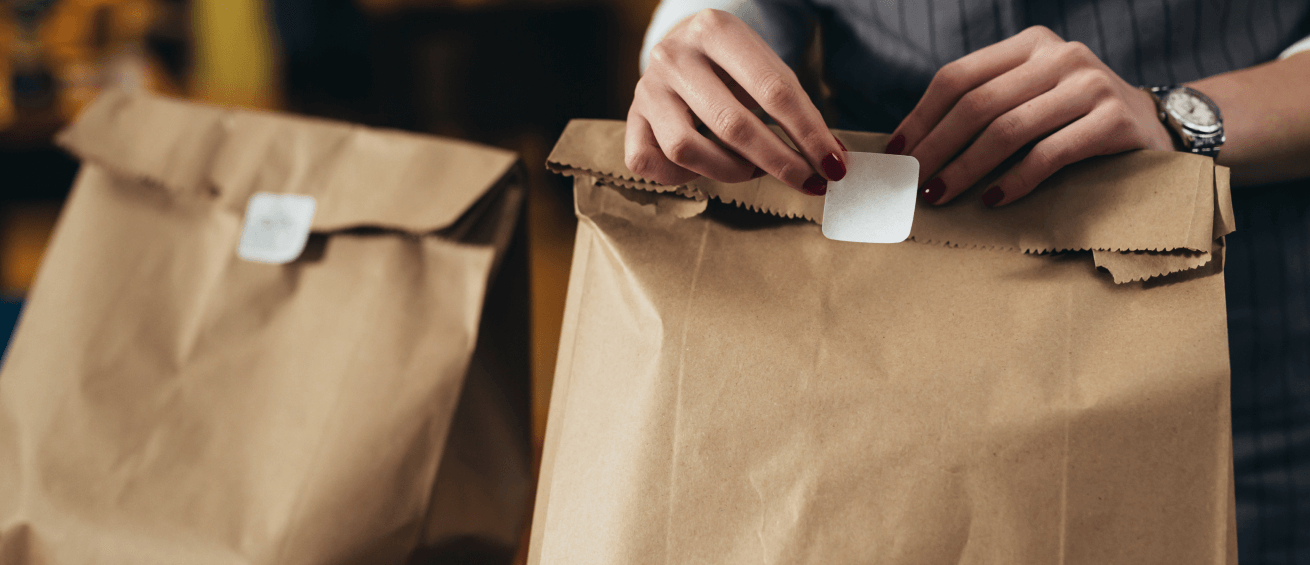
Customer experience specialist. When retailers and manufacturers going direct to consumers create the best customer experience — online, in-store, or in a combination of the two — they can become shoppers’ preferred destinations. A superior experience does not depend only on the functional aspects of a store or platform, or on leveraging customer communities. Instead, the cornerstone is often passionate front-line staff, who are strong product and brand advocates, whether in a store or via digital tools. Smart operators in this archetype empower their staff, sometimes by building systems and tools to help them readily access product and stock data to answer a shopper’s questions and offer a personalized service.
Fulfillment specialist. By owning the last mile, fulfillment specialists get products rapidly and cheaply from distribution centers and stores to customers. This strategy focuses on efficient, reliable, and low-cost operations, and it can fuel a product manufacturer’s own B2C business or provide a service to other businesses. The specialists build scale networks and processes that are optimized from end to end. That strength may translate into a differentiated customer offer based on low cost, great service, and reliability. It may also include real-time fulfillment tracking, the offer of frequent drops, or a network of easily accessible collection points.
Key location player. Making the best use of locations remains a strong strategic play for a store-based business despite a shift to digital channels and despite the recent lockdown measures and the trend towards working from home. Locations can have value by being convenient: They can consist of pickup points at commuting nodes or close to people’s homes; and they can be combined with — or close to — offices and residences that provide a pool of potential customers. Some key locations are upmarket, such as prime high streets and shopping malls. Nearby entertainment venues can draw traffic too. Location players acquire strategic control by setting up in these places and using them as a basis for a proposition and operating model that supports customer needs.
Leading the change
The revolution in retail has arrived — and is accelerating. Preparing for it requires strong leadership: Leaders must come up with a strong vision and define bold answers and moves. Then they need to communicate their plans effectively to inspire consumers and staff alike. And they have to maintain an organization’s energy and commitment to transformation. We were already living in a period of unprecedented change, and this has been accelerated by a black-swan event in the pandemic. There is now even greater urgency to find and implement the right solutions for the retail and consumer goods industries — and to prepare organizations for further opportunity and transformation.
Rising ESG Expectations
How Do Consumers Really Feel About Eco-Friendly Products?
By Alexander Chernev
7 min read

Findings suggest the perception of the company as investing in sustainability leads to a halo effect — consumers, especially those with strong environmental values, believe the products will be effective.
When you reach for a jug of eco-friendly detergent in the store, are you buying it because you want to protect the environment? Or do you believe it’s likely more effective than a traditional cleaner? Or perhaps it’s some combination of the two?
Understanding how consumers perceive sustainable products has become increasingly important, as these products — once considered niche — crowd retail shelves. Share of sustainably marketed consumer goods has grown an estimated seven times faster than that of conventional products.
In this context, Kellogg marketing professor Alexander Chernev recently researched the link between knowing a product was made by a sustainably minded company and perceptions of that product’s performance.
Some past research suggests that products developed using traditional technologies or materials will be seen as superior to “green” options that are developed with sustainability in mind. This is known as the “sustainability liability.”
“It’s zero-sum thinking,” Chernev says, “where if a product is good on one attribute, it must have deficiencies in others” — a kind of compensatory reasoning as his own previous research has highlighted. “Consumers may think, ‘It’s great that the company is making sustainable products, but I’m going to buy the regular one.’”
RISING ESG EXPECTATIONS
The Growing ESG Imperative
Read more
That may give companies pause about developing sustainable products in the first place, given the costly technology investments it typically requires. Similarly, marketing products as sustainable could backfire if it reduces consumers’ perceptions of efficacy.
But Chernev and co-author Sean Blair of Georgetown University were skeptical that the sustainability-liability concept held in all circumstances. Indeed, past findings for the effect have been inconsistent — and people’s perceptions of sustainable-product efficacy are evolving. An example of this is Tesla electric cars, which many view not only as environmentally friendly but also as high-performance vehicles. “People see them as equal or superior to traditional cars,” Chernev says.
Moreover, previous work by Chernev and Blair revealed that consumers tend to perceive products as high-performing if the companies that make them are socially responsible — if, say, they engage in charitable giving. The researchers dubbed this a “halo effect.”
So could companies investing in sustainable technologies enjoy a similar halo effect, with their products also being seen as more effective?
Across four studies, the researchers found that eco-friendly products, as well as those from companies pursuing sustainability-focused agendas, are perceived as higher-performing than traditional offerings — especially when consumers have strong environmental values.
Overall, the results indicate, as the authors write, “a company can do well while helping to protect the environment.”
Companies would be wise to stress how their investment in sustainability is driven by a sense of moral responsibility, since communicating this seems to generate a particularly strong halo effect.
Anatomy of a halo
In the first study, participants were shown descriptions of products, such as sunblock and detergent, and asked to rate their perception of the products’ performance. Some participants were told the products were sustainable: a detergent containing only biodegradable ingredients, for instance.
The researchers found that people’s perceptions hinged on their values. People with weaker environmental values saw sustainable products as less effective than their traditional rivals. Those with stronger values, in contrast, demonstrated the reverse, perceiving eco-friendly products as superior in performance.
A second study explored the idea further, examining whether associating sustainability with the company — rather than product — also increased perceived product performance. Here, participants saw descriptions of a company that made ink products, like pens and markers. Some participants were told the product was eco-friendly, others that the company was eco-friendly and still others were told nothing specific about sustainability.
The eco-friendly associations again boosted perceptions of product performance — and the effect was larger when it was linked to the company rather than the product.
Subsequent studies set out to more fully understand which aspects of sustainability contribute to this halo effect, and for which individuals. For instance, one study found that when a company stressed that it considered its sustainability program to be a moral responsibility, it enhanced customer perceptions of product quality. But this did not hold for people who strongly believed that eco-friendly products are inferior to traditional ones.
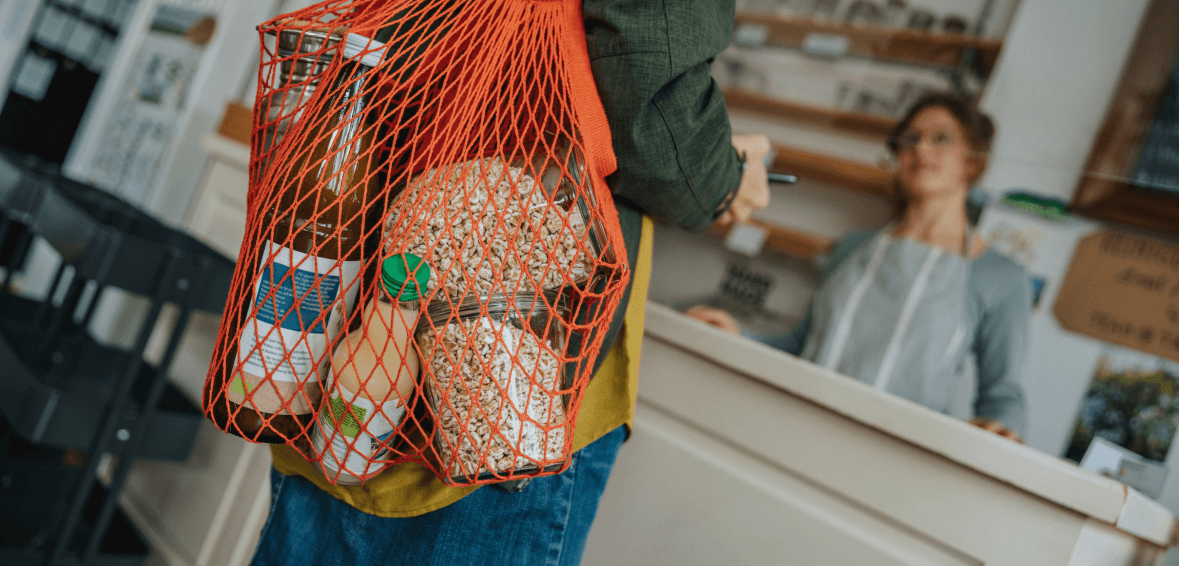
The case for sustainability
Taken together, the results show that a sustainability liability is not a given, and that there are ways that companies can work to avoid the perception among customers.
One critical takeaway is that perceptions of sustainability can actually have a positive impact on perceptions of product performance, which runs counter to the traditional sustainability-liability view.
“That means fewer reasons for companies to avoid investment in sustainable technologies,” Chernev says. “They no longer have to believe sustainability will necessarily hurt perceptions of their products.”
Indeed, the findings suggest the perception of the company as investing in sustainability leads to a halo effect — consumers, especially those with strong environmental values, believe the products will be effective.
“It’s about positioning the company as investing in sustainability in general, not just in specific products,” Chernev says.
Additionally, companies would be wise to stress how their investment in sustainability is driven by a sense of moral responsibility, since communicating this seems to generate a particularly strong halo effect. For example, a detergent maker could emphasize that avoiding the use of harmful chemicals in its products can help sustain the environment for future generations. This aligns with the researchers’ previous finding that products made by companies doing good for society — charitable giving, in that case — are viewed as higher-performing.
A brighter halo
As concern about the environment rises globally, it will become easier for companies to move from a sustainability-liability stance to one where they project a halo effect.
“With proportions of the population that care for the environment increasing, the effect would move more toward halo than liability,” Chernev says. That is, more people would see products from environmentally focused manufacturers as effective, improving the average perception of the product.
Still, it’s important to remember that consumer perceptions are also influenced by actual product experiences. “People have more experience with sustainable products now,” he says, “and many of the products have proven themselves in terms of performance. And as long as this trend continues, sustainability is likely to benefit perceived product performance rather than being viewed as a liability.”
Previously published in Kellogg Insight. Reprinted with permission of the Kellogg School of Management.
Rising ESG Expectations
Recycling Is Not Enough
By Curtis Underwood , and Hunter Williams
10 min read

The variety of sustainable packaging for consumer products is widening.
Possibly the world’s most-watched turtle video was a bloody affair. In 2015, researchers off the coast of Costa Rica pulled an object out of a sea turtle’s nose — causing the turtle to bleed from the nose and twitch in distress. The object turned out to be a plastic straw.
Versions of the video have been seen well over 100 million times on the internet, and it has likely given CEOs nightmares: What if my company’s logo had been on the straw? What if another piece of waste plastic gains similar notoriety — say, a plastic bag that has suffocated a baby seal — and it has my company name on it?
Sustainability has become a priority issue for manufacturers of consumer products. Over the past few years, numerous high-profile reports have highlighted the dangers of plastic waste. More than half of consumers in a global survey said they would pay more for eco-friendly products, and nearly half of consumers in the US said they would be prepared to pay a 5% premium for products with sustainable packaging.
But consumers still expect companies to bear the burden of sustainability, according to another survey: 80% worldwide agree that manufacturers should be obliged to help with the recycling and reuse of packaging that they produce. Most product manufacturers are light-weighting their packaging, by designing it to use less material. But some packaging is needed — to keep food clean, fresh, and safe; to maintain it at the right temperature; and to stop liquids leaking.
RISING ESG EXPECTATIONS
The Growing ESG Imperative
Read more
Other than reducing the amount of packaging used, there are three main solutions: recycle, reuse, substitute with eco-friendly materials. The best of which are compostable and can quickly degrade.
Recycling has become widespread, and some major brands have already taken up reusable and compostable packaging on a limited basis. Most coffee shop chains sell reusable mugs, and many are now testing recyclable and compostable cups. Some major grocers have introduced compostable meat trays and salad boxes. Compostable bowls are increasingly common in fast-food chains, and compostable clamshells are being used to tote leftovers from forward-thinking establishments.
Each of the three solutions has advantages and disadvantages in cost, how effectively products are packaged, and benefit to the environment — the extent to which they are truly sustainable. Product makers and other users of packaging have to figure the best options for their purposes.

Recyclables
Most CPG companies are currently improving the recyclability of their packaging, which has till now included plastics that are hard to recycle — such as polyvinyl chloride (PVC), used for electronics products; and low-density polyethylene (LDPE), the material for plastic bags. These are being replaced with plastics that are more easily recycled: polyethylene terephthalate (PET), which goes into water bottles and food packaging; and high-density polyethylene (HDPE), used for milk and detergent bottles.
To simplify recycling, product makers are increasingly using a single material per package: soda bottles and caps both made of PET; or uncoated papers, so that the paper can be recycled without any plastic coating remaining in the mix. They are eliminating additives to plastic packaging materials that make them oxo-degradable — that is, consisting of a mixture of biodegradable materials and plastics that remain in the environment. At the same time, they are using these recycled materials for packaging so as to reduce use of virgin material.
However, the current recycling system has leakages, which erode sustainability gains. China handled nearly half the world’s recyclable waste until 2018, when it banned the import of most plastics and other materials. Local recycling infrastructure in the US has not yet developed sufficient capacity, and further advances in reverse logistics are still needed. As a result, 52% of consumer-packaged goods are packaged in plastic, but less than 10% of these plastic packages are effectively recycled, according to the Environmental Protection Agency (EPA). Even with a leakage-free collection system, plastics can only be recycled a finite number of times, after which they end up as landfill (See Exhibit 1).
Exhibit 1: Lifecycle of packaging material
Source: SME interviews, Oliver Wyman research and analysis
Reusables
Reusable packaging products are, theoretically, the most sustainable option, and they are common in some parts of the world for some products. Consumers returning beer bottles can receive a small payment in exchange, and many supermarkets are encouraging the use of fabric bags.
But several barriers have limited their use. Cleaning packaging between cycles carries a cost and potential risks. It is also complex to track reusable packages, and there is a risk of loss and theft, as when beer kegs go missing. Consumers often see reusable packaging as unclean — especially during the COVID-19 pandemic because of the sanitization concerns it has raised. As a result, food industry executives are bearish on the long-term potential of reusables. “People are generally unwilling to make the necessary tradeoffs,” said the vice president of purchasing at one grocery chain.
Moreover, greenhouse gas emissions during the production of reusable packaging are typically greater than for disposable products, giving them a high “break-even” number of use cycles before they can be considered more sustainable. For ceramics, such as a coffee mug, it would take 39 uses to break even compared with a mug made from uncoated paper and more than 1,000 compared with one from expanded polystyrene foam.

Compostables
Compostable materials are produced from renewable organic sources, such as softwood and corn. At the end of their life, they can be processed into organic material by letting bacteria and fungi break them down over time, after which they are used to enrich soils. This process requires significant energy input but is fully circular. The primary compostable packaging materials used today are uncoated paper, bio-plastic, and molded fiber (See Exhibit 2).
Uncoated paper has no coating of the kind sometimes used to give a glossy finish to paper-based packaging and to make it more durable. It is less smooth than coated paper and absorbs more ink. It also has poor water and oil resistance and tends to lack strength. It is low cost and typically used for basic packaging of lightweight dry goods.
Bio-plastics are made from renewable biomass sources, such as vegetable oils, straw, and recycled food waste. They have good resistance to water and oil, as well as low heat retention, which makes a cup of hot coffee easier to hold. They are typically used for applications requiring product visibility, such as wrapping for salads, flowers, or candy.
Molded fiber has been around for a long time in the form of egg cartons made from wood pulp. But it can be made from cellulose fibers from other plants, such as switchgrass and biomass sorghum. It has good resistance to water and oil, as well as high strength and heat retention, making it suitable for clamshells containing hot food. Molded fiber can be precision-manufactured to various 3D shapes. It is typically used in food applications or high-quality packaging inserts, such as for smartphones and wearables.
There are several barriers to widespread adoption of compostable packaging materials, some the result their small current scale.
Exhibit 2: Compostable packaging material comparison
Area proportional to material favorability
Source: Oliver Wyman analysis
First, commercial composting infrastructure is not present in all markets, and there is a lower density of collection points than for landfill and recycling waste. Also, consumers are generally not aware that materials can be compostable, particularly bio-plastics. This results in significant leakage. To overcome these challenges, government investment, municipal guidelines, and consumer education campaigns are needed, as are incentives and regulations such as extended producer responsibility.
Compost can also be contaminated by per- and polyfluoroalkyl substances (PFAS), which are thought to be carcinogenic and do not break down in natural conditions — they have been dubbed “forever chemicals”. One solution would be to adopt PFAS alternatives, which have been developed by some sustainable-packaging players.
Compostable materials are currently more expensive than comparable conventional materials such as PET and expanded polystyrene (EPS) (See Exhibit 3). This premium may be overcome by consumer demand, especially given people’s recent willingness to pay a small premium for eco-friendly products.
Exhibit 3: Compostable packaging material comparison
Price relative to PET (across a basket of products, including bowls, plates, 9x9x1” clamshells, and 6x6x3” clamshells)
Source: Oliver Wyman analysis
Conclusion
Incidents over the decades show that it only takes one viral news story to tarnish the image of a brand or product — and packaging is highly visible. However, for profit-strapped businesses, meeting environmental commitments can be more challenging than making them. Companies need a plan to achieve packaging sustainability without excessive cost and in a way that catches the attention of sustainability-minded consumers. Incremental steps towards sustainability, such as improving recyclability, may not be enough to stand out from the crowd or prevent a future marine-life branding disaster from damaging a business. Rather, consumer goods manufacturers should make choices based on what their packaging needs to achieve for their products, how easy it will be to process after use, and the potential for other environmental impact.
Accelerating Technology Transformation
Becoming Frenemies With Delivery Super Apps
By Rick Oxenhandler, and Mathieu Barthelemy
5 min read

COVID-19 has fundamentally changed our lives, in many ways permanently. One of the profound changes we are seeing is in the way consumers purchase goods and services: Increasingly the store is delivered to the customer rather than the other way around.
This has led to an exponential rise in delivery companies who have now expanded to serve as aggregators for many merchants. Two years ago, who would have predicted that a relative unknown grocery delivery super app would now have a 50% share in online grocery delivery and a valuation of $40 billion? Overall, US food delivery revenues are estimated at $130 billion-$150 billion, with online grocery representing the lion’s share at $90 billion-$110 billion.
The valuations of delivery aggregators have skyrocketed through the pandemic. Leading players have expanded seamlessly from delivering food to a host of new categories, including prescriptions, electronics, home décor, and beyond. One of Southeast Asia’s largest consumer technology platforms, provides insights into where delivery platforms might be headed as they gain control of customer relationships. Launched in 2012, the company has evolved into a super app with everything from ride-hailing and food delivery services to financial services for the unbanked. It announced it would go public in April 2021 at a $40 billion valuation, the app has had over 214 million app downloads across the eight Southeast Asian countries it operates in and recorded $12.5 billion in gross merchandise value last year. As aggregators expand to new areas of activities; merchants with proprietary payments can expect increased competition in financial services as well.
Exhibit 1: Key aggregator operating models along the online purchase customer experience
Source: Oliver Wyman analysis
As the user base and the functionality of these apps grow, it is important to consider how much of consumers’ share of mind and attention they are capturing. And with this share of mind and attention comes significant parts of the customer shopping and payments journey. Delivery aggregators are fundamentally re-defining the role of the payment transaction for merchants that rely on their services for last-mile delivery.
As these aggregators capture share of the customer relationship, there are distinct implications for merchants (See Exhibit 3).
What is the optimal view of delivery aggregators as our “frenemy”? What will the future of payments look like in a world where the merchant increasingly does not control the checkout experience and perhaps even the payment experience? These questions become most salient when delivery platforms start to nudge shoppers from one merchant to another. For instance, certain grocery platforms actively track basket purchases and a customer purchasing vitamin C from retailer A may find a promotion for vitamin C and other products sold by retailer B in their inbox the next day.
Exhibit 2: Aggregator intermediation in online purchase customer experience
Source: Oliver Wyman analysis
For merchants’ corporate strategy, partnering with aggregators is a delicate balancing act between driving sales and preserving strategic control over the customer relationship, of which the payment is one key component. Relying on delivery aggregators has direct implications on merchants’ revenue and multiple aspects of their payments operations. For instance, grocery merchants can expect to pay a 5%-10% fee per transaction on delivery orders fully serviced by aggregators, directly impacting revenues. In addition, merchant payment acceptance costs can also double, depending on the delivery platform. Beyond financial impact, using delivery aggregators has repercussions at each step of the online purchase customer experience.
Depending on the delivery operating model selected by the merchant, the customer transaction may reside in the aggregator or in the merchant’s environment. If the checkout flow sits with the aggregator, there are several additional implementation considerations for the merchant.
Exhibit 3: Key aggregator operating models along the online purchase customer experience
Corporate strategy. What is our overarching strategy for partnering with delivery apps and how are delivery apps prioritized vs. our own channels? How should our loyalty program fit along side of, or stack with, those of delivery apps to optimize business model and customer stickiness?
Customer experience. What are the customer experience and relationship ownership and control trade-offs between our app and delivery apps? How does the UX tie-in with a seamless, instant payment process?
Operating model. How can we reduce our cost for partnering with delivery aggregators? What considerations are necessary with delivery aggregators based on our company structure (e.g., franchise model)? How can the model tie-in to existing payment partnerships with our acquirer and card networks?
Implementation considerations. What forms of payments and shopping flows should we offer across our proprietary channels given delivery aggregator offerings? What are the changes required for fraud and chargebacks? How can collected data enrich the customer loyalty profile? How can interchange fees be optimized in-channel?
Source: Oliver Wyman analysis
On the back end, fraud and disputes need to be handled, typically through new processes and returns also need a dedicated approach. Furthermore, enabling the use of proprietary merchant-led payment methods may require new integrations and loyalty earning is difficult to offer.
Merchants also need to consider the impact of this third-party-led channel on their payment partner relationships that include transaction volume commitments, for instance with acquirers or card networks.
For merchants, working with aggregators triggers significant strategic and operational considerations that directly impact their payments. These considerations cascade down from overarching corporate strategy to customer experience, operating model, and finally implementation considerations. The strategic choices made at each step influence payments, especially costs and customer experience, considerations that are critical areas of focus for merchant payments teams engaging with delivery platforms.
This article was originally published by the Merchant Advisory Group on July 19, 2021.
Accelerating Technology Transformation
Retailers And Brands, Prepare For The Social Commerce Surge
7 min read

E-commerce, while convenient, has up till now lacked the social experience that people get from a trip to the store with friends. After many attempts to change this in the past, e-commerce appears to be at an inflection point, and there has been a surge of activity over the past year. Major social media platforms have launched new shopping features that let users browse virtual stores and make purchases without leaving the platform. And startups are setting up digital malls and sites where influencers and other people can share recommendations. The total value of shopping either triggered by or carried out on social media platforms is forecast to rise to $1.6 trillion in 2025, according to Statista, from about $600 billion in 2021.
That means it’s time for retailers and brands to figure out how social commerce fits into their e-commerce strategies. Categories such as fashion, which are often bought on impulse, are a natural fit, because they are often visually inspired. On the other hand, categories such as electronics have a longer and more complex journey from intention to purchase, but social advertising could boost their sales through better-targeted, more-effective campaigns. Though the specifics are still rapidly evolving, it is all-but certain that social commerce will represent a large part of future e-commerce transaction value. Any retailer or brand that does not now start thinking social commerce risks being left behind.
What is social commerce?
Social commerce can be roughly defined as all interaction on social platforms that potentially leads to a transaction between parties, and it divides into two main parts: social advertising and social shopping. Social advertising consists of advertising on social platforms. This is growing as a proportion of total digital advertising for brands and retailers and was forecast to be worth around $138 billion globally in 2021, according to Statista. In social shopping, on the other hand, businesses sell products directly on social media platforms or following social media interaction between consumers. Social shopping was forecast to reach $447 billion in 2021.
SOCIAL advertising
$138 bilion (2021 forecast)
Advertising on social media platforms: sponsored posts, stories, etc.
Social commerce really started off in Asia, which is now about a decade ahead of the rest of the world and represents 68% of global value, according to Grand View Research. Within Asia, China has led the trend, but Southeast Asia is also now experiencing a surge, and social commerce there is now estimated to be 44% of overall e-commerce value.
That lead is largely thanks to the broad-based platforms of digital giants, especially in China, who had an incentive to keep users within their own ecosystems. They have made it easy for sellers to either link from social media sites to their own stores, or else sell directly within a social media platform for a seamless consumer journey and checkout. Adjacent models are emerging, too.
Livestreaming is becoming an important sales channel, while one platform lets users share what they have browsed or bought with their social network and invites them to form small teams to make group purchases at lower prices.
In Europe and North America, leading social media platforms launched stores during the COVID-19 pandemic to help physical stores do business during lockdowns. They are also continuing efforts to attract a larger share of the spending on digital marketing through innovative advertising formats such as live feeds, stories, and carousels. They combine these with tools that show the returns on campaigns. The advertising tools and storefronts together serve to keep consumers on their platforms all the way from first interest to purchase — a strategy similar to that of the Chinese platforms.
New, niche players are functioning as online malls with social media features, and they often reward users for sharing their favorite items — either directly, through payments, or by helping them measure and compare their influence, which constitutes a kind of social reward. Other models use social media analytics to measure the influence of individual users.
A major challenge — shared with Chinese players — is to scale beyond products bought on impulse to higher-value, technical categories, such as electronics, appliances, travel, and home-repair and improvement products. Here, purchase journeys are more complex and include extensive research and price comparisons, and the new platforms have not yet achieved a presence. Social media should be able to play a role, however, as they can relay the shopping decisions of people with similar tastes and interests. They could also let people seek advice, perhaps asking their network, “What’s the best TV for $1,000?”
Social SHOPPING
$447 billion (2021 forecast)
Consumer to consumer interaction recommending a product or brand leading to a sale (including influencers)
Sales through storefronts on social media
What should brands and retailers do?
Brands and retailers can benefit more from social media advertising if they focus on its special features, such as its ability to micro-target campaigns and the role of influencers. They can get the most impact from influencers by using them selectively to promote launches of new products and collections, and expert influencers can help target offers to specific customer segments. Social shopping sales can be boosted by selectively building out stores on the new platforms and designing price and product strategies for different channels, such as exclusives for a particular social commerce store. The social stores will function best when they are integrated with companies’ own customer databases and loyalty programs.
As social commerce matures, it creates opportunities for retailers and brands to get closer to consumers and better understand their purchase journeys for different categories. Sellers will thus be able to respond with targeted propositions at each step. They will also see how various products perform along the journey and, consequently, what matters to customers. Platforms can also help to identify potentially valuable influencers and experts.
Combining the connectivity, stickiness, and engagement of social media with the massive growth in e-commerce, social commerce is sure to be a big part of the future of e-commerce. Any brand or retailer that wants to be part of that future needs to take it seriously, now.
Conclusion
Leadership In A More Complex Future
By Leslie G. Sarasin
6 min read


Among the most common questions directed at company leaders today is something like this: “What has the pandemic changed about your business?”
It’s almost impossible to answer that question without raising an eyebrow, wincing, or slightly smiling. That’s because the pandemic has changed almost everything. That said, it is important to identify the best responses to this question in order to help navigate the road ahead.
What the pandemic has changed
The pandemic has transformed the direction of some trends and accelerated many others that were already underway.
In the first case, shoppers would not have turned into home-centered beings so dramatically without the COVID-19 pandemic. FMI’s Grocery Shopper Trends research has tracked pandemic-era shifts in consumption behaviors, as consumers embraced more meals at home. The industry has responded proactively. FMI’s The Food Retailing Industry Speaks 2021 research found more than 80% of responding retailers expect to increase space allocation for fresh-prepared, grab-and-go selections. About two-thirds said that targeting solutions for family meals has been a key competitive differentiator.
What the pandemic has accelerated
Aside from changing the course of some trends, the pandemic has accelerated the forward progress of many others. One that immediately comes to mind is the surge in ecommerce and omnichannel shopping. Ecommerce was growing before the pandemic, but now it has become embedded into how we do business.
Likewise, the pandemic accelerated the adoption of emerging technology, the importance of rethinking workforce issues and consumers’ pivot to increased health and well-being needs.
What has not changed
The pandemic hasn’t changed many of the core goals of the food industry. This business is still about feeding families and enriching lives. Retailers and their trading partners have worked indefatigably during the pandemic to succeed in this mission. Leaders have acted with a sense of great urgency. We can be prouder of this industry than ever.
Navigating the road ahead
The opening article in this edition of Boardroom outlines key future directions for the industry that will help inform FMI’s upcoming three-year strategic plan. Leaders are asking for insights on how they can best navigate their own companies in a future that is anything but clear. Here are a few thoughts on how leaders can successfully address the complex future. These ideas will likely be interpreted a bit differently by each organization.
Ace the shopper test. This is a good time to ask, “How well do I know my shoppers?” We’re in a period when consumers are changing so quickly that even our shoppers express surprise about their own rapid behavior shifts. It’s crucial for retailers to continue tracking these changes — on topics ranging from transparency to health and well-being — and meeting shoppers where they are. The best way to win is with efforts related to customization and personalization.
Understand people power. We’ve long said, “People are our greatest asset,” but now we understand more than ever how true this is. The pandemic showcased the heroic actions of store associates and the complexities of employee recruitment and retention. Leaders have prioritized taking care of associates, and this needs to continue. We must ensure their health and safety, put a premium on training, and embrace the next generation of workers and future leaders.
Make planetary moves. Many of us used the old popular business phrase “Think globally, act locally.” This phrase has new relevance at a time when environmental sustainability is more front and center than ever before. We must contribute to creating a circular economy that makes the planet a better place to live. We need to prioritize clean water, sustainable packaging and agriculture, and better use of finite resources. No less important are the imperatives of reducing food waste and lessening food insecurity.
Success on key strategies will ensure businesses are better equipped to serve consumers, more environmentally conscious and expert at connecting the supply chain.
Reassess the health stakes. As people spent more time in their homes due to the pandemic, they thought about health and well-being needs on many levels. Over time the primary healthcare model is migrating more to retail. Food retailers are in some cases becoming full-blown healthcare providers that happen to be in the grocery business. Retailers have the opportunity to leverage professionals ranging from pharmacists to registered dietitian nutritionists to play bigger roles in serving customer needs.
Think like a CIO. Today, if you’re not a tech-enabled retailer or manufacturer, you’re at a competitive disadvantage. CEOs need to think more like CIOs to understand the importance to the business of technology. They must put a premium on using technology in safe and secure ways, and to avoiding the crossing of privacy boundaries in ways that make shoppers feel uncomfortable.
Turn partners into colleagues. The pandemic period has advanced trading partner collaboration, mostly out of necessity. It has become clearer that retailers and product suppliers — who share common customers — need each other more than ever. Going forward, there’s an opportunity to take this to even more prominence. Trading partners can think and act as though they work in the same company. That kind of mind shift will help everyone focus on what’s most important.
What success will look like. What will companies and the industry look like in five-to-10 years if we succeed with the strategies outlined here? We‘ll have businesses that are better equipped than ever to serve consumers, more environmentally conscious, highly efficient at reducing food waste, adept at reducing food insecurity and expert at connecting the supply chain.
FMI has important roles to play in helping make all this happen — from driving performance metrics to continuing to advocate for the industry at all levels of government.
The danger of falling short. What if we don’t make enough progress on these strategies? We won’t be in a good position to positively engage customers and associates. We will be challenged in trying to improve the lives of people and the future of communities. We won’t be as agile and resilient when facing the next crisis.
So, the best advice is to avoid falling short. Let’s move forward individually and collectively. That’s a sure- re way to ensure readiness for all the challenges ahead.

Evolving Customers Behaviors
Health & well-being: the food as medicine opportunity
FMI — The Food Industry Association

Health and well-being has taken on a greater sense of importance across the food industry, especially in the wake of the pandemic. Consumers are leading the charge and stakeholders from retailers to product suppliers are supporting these needs.
Getting behind food as medicine
The next phase in this journey involves spotlighting the concept of Food as Medicine.
The details of this concept are spelled out in a 2021 report called The Food as Medicine Opportunity in Food Retail, from FMI and the Academy of Nutrition and Dietetics Foundation.
“The time is right to embrace the Food as Medicine concept, which directly ties into consumer aspirations to enhance their health and well-being through food,” relays the report. “Food retailers have a unique opportunity to make progress with helping consumers on their health and well-being journeys at a time when consumers are focusing more on this topic.”
Research conducted for the report found that consumers relay positive feedback about food as medicine and retailer programming already supports the concept — all of which provides a strong base for further advances.
The Food as Medicine concept has the potential to further enrich the lives of consumers and make food retail an even more valuable partner for its customers.
In 2021 the Academy approved a conceptual definition for food as medicine that spotlights the following points:
- Food as preventative medicine to encourage health and well-being.
- Food as medicine to improve nutrition security.
- Food as medicine in disease management and treatment.
- Food as medicine to promote food safety.
In 2021, FMI created a policy statement in support of this conceptual definition. FMIʼs statement emphasizes that food as medicine efforts must be grounded in credible research and science and should not undermine the importance of prescribed drugs.
A companion program evaluation guide from the Academy outlines how to make further progress.
Raising the profile and providing resources
Food as medicine is still at an early stage as an industry strategy.
Academy research identifies program models that work — ranging from food prescription programs to personalized nutrition education. The 2021 report on Food as Medicine relays key target shopper groups and doʼs and donʼts for boosting credibility.
In 2022 FMI will focus efforts on helping to raise the profile, including by providing guidelines and toolkits.
Registered dietitian nutritionists (RDNs) are in the best position to lead Food as Medicine efforts at food retail. However, to help ensure success, the concept needs buy-in and engagement throughout retail organizations, including from executive leaders and chief merchants. Improved commercial success must accompany improved health outcomes.
Also critical are partnerships in communities and across the healthcare sector.
Measuring outcomes to determine next steps
Not surprisingly, in a food retail industry that values metrics, leaders will want to monitor programs to measure success. They will need to understand what works and what doesnʼt. The outcomes may be somewhat different for each retailer and market area.
The food as medicine journey is exciting. It has the potential to further enrich the lives of consumers and make food retail an even more valuable partner for its customers.

RISING ESG EXPECTATIONS
The Growing ESG Imperative
FMI — The Food Industry Association

Not all food industry issues are created equal when it comes to levels of complexity.
One of the most complex topics by far — which is also accelerating in importance — is ESG (Environmental, Social and Governance).
ESG is sweeping in its breadth, embracing subjects including environmental sustainability; the use of energy, social responsibility; diversity, equity and belonging; food insecurity and food-waste reduction.
Changing values drive efforts
What all of these elements have in common is a growing demand for progress by increasingly values-driven consumers and investors — and advancing recognition by the food industry of the need to take action.
FMI research underscores how consumer attitudes are progressing on these issues, many of which have grown in prominence during the pandemic. For example, FMIʼs US Grocery Shopper Trends 2021 research found that 38% of consumers surveyed said they consider recycling and sustainability practices as important attributes in selecting a primary grocery store — a gain of eight points from the prior year.
Meanwhile, FMIʼs The Food Retailing Industry Speaks 2021 report found that retailers surveyed are focusing on goals and implementation time frames for a range of social responsibility efforts. These include 90% for charitable donations, 73% diversity in hiring, 70% for diversity, equity and inclusion efforts overall, 61% energy use reduction, and 57% for food waste reduction.
Companies need to work on a dual-track effort: making initial short-term progress while pursuing longer term efforts.
Choosing key initiatives
The complex nature of ESG sometimes makes it hard for leaders to know how to move forward. A 2021 FMI report relays key issues and next steps on the highly important topic of sustainability. This report is called Sustainability in the Food Industry: An Evolving Landscape. It takes a deep dive into issues including energy use reduction, sustainable sourcing, plastics and packaging waste reduction, animal welfare, carbon emissions reduction and climate change in agriculture.
FMI helps connect the dots
FMI is focused on helping the industry navigate in the widening world of ESG. Among the ways it helps to connect the dots are the following:
- Leading coalition efforts to help the industry set goals at scale
- Supporting the creation of performance measures and coordinating these across supply chains
- Connecting different industry sectors — including retail, foodservice and food insecurity-focused organizations
- Interfacing with government to drive policies relevant to industry efforts
- Organizing roundtables and other conversations to address the issues
- Pursuing efforts to train leaders — and future leaders
Moving ahead on the ESG journey
There isnʼt just one ESG blueprint for companies. Each organization needs to decide on its priorities as a business, what its customers expect and how to create the right mechanisms to meet those needs.
Companies need to work on a dual-track effort: making initial short-term progress while pursuing longer term efforts. Leaders need to figure out where they are on their journeys, where they want to be, and how long it will take to get there.

1 / 13
Home


